‘Sleepover’ by Laura Brinin builds on 10 years of performance-based inquiry. The exhibition transforms dialogue, intimacy, and shared encounters into text-based works, preserving fragments of conversation and reframing everyday speech as something poetic and revealing.
CLOSING EVENT
Side Gallery
3.00 pm Sunday 5 October, all welcome.
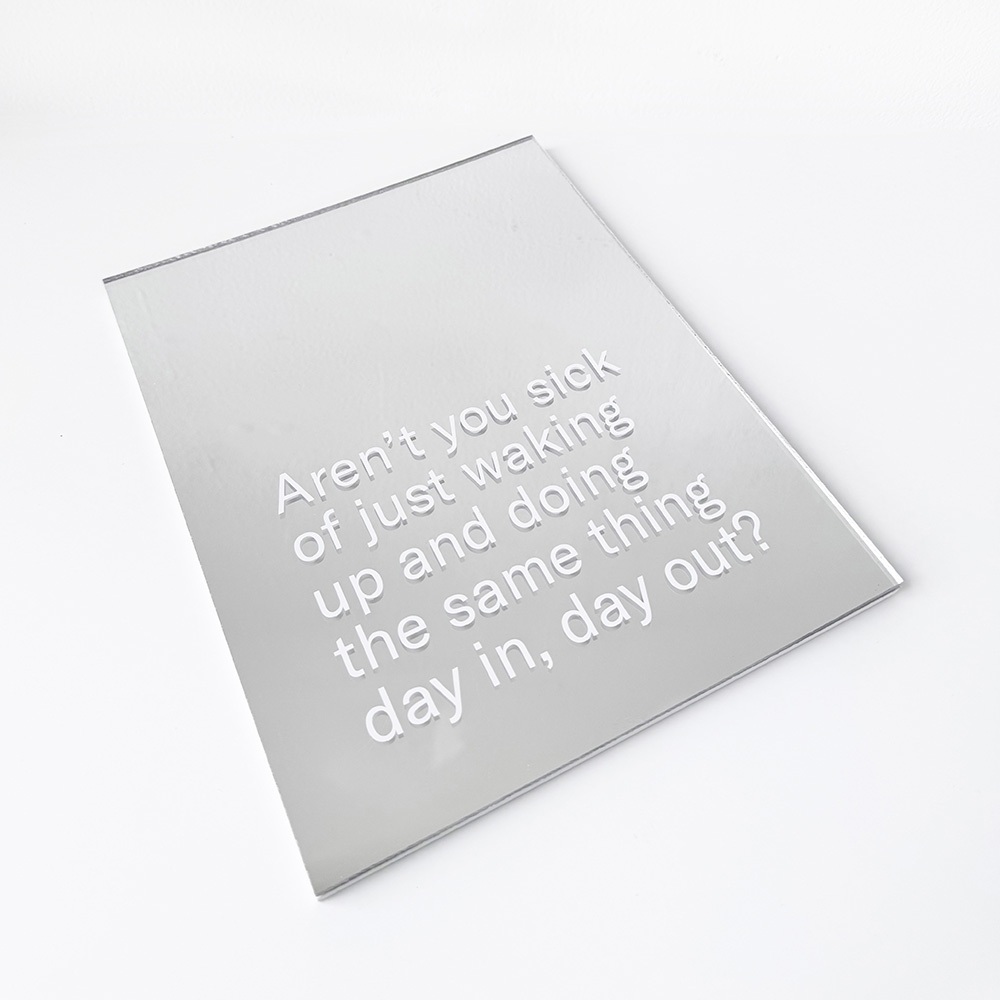
Aren’t you sick of just waking up and doing the same thing day in, day out? — Laura Brinin 2025
Mirror acrylic, vinyl
25 x 20 cm
$140
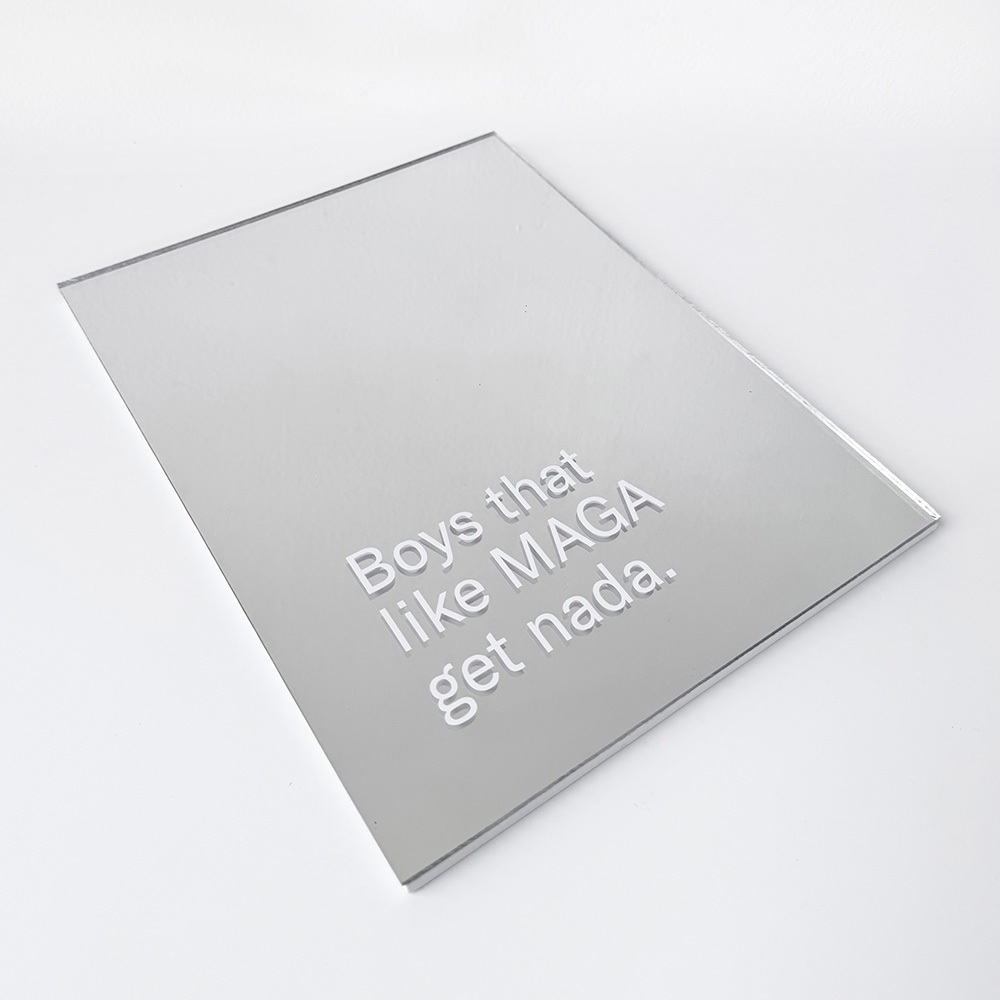
Boys that like MAGA get nada. — Laura Brinin 2025
Mirror acrylic, vinyl
25 x 20 cm
$140
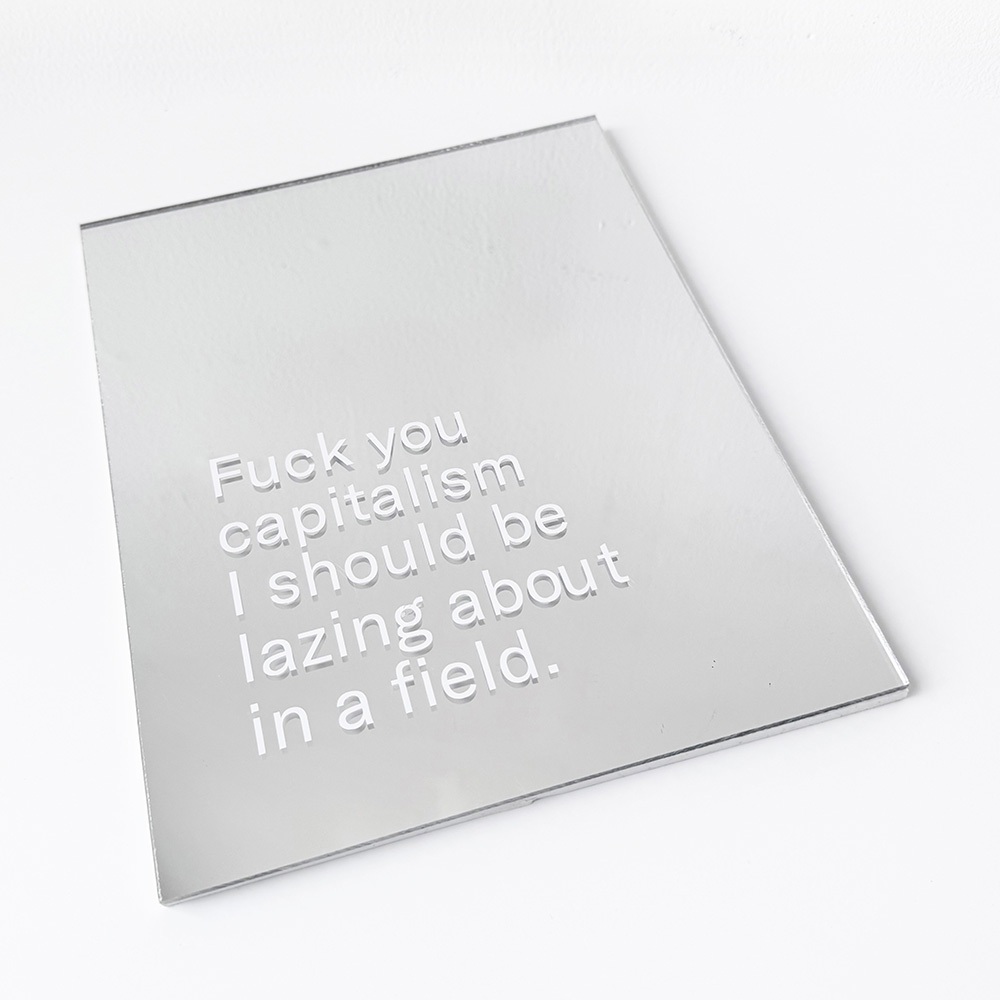
Fuck you capitalism, I should be lazing about in a field. — Laura Brinin 2025
Mirror acrylic, vinyl
25 x 20 cm
$140
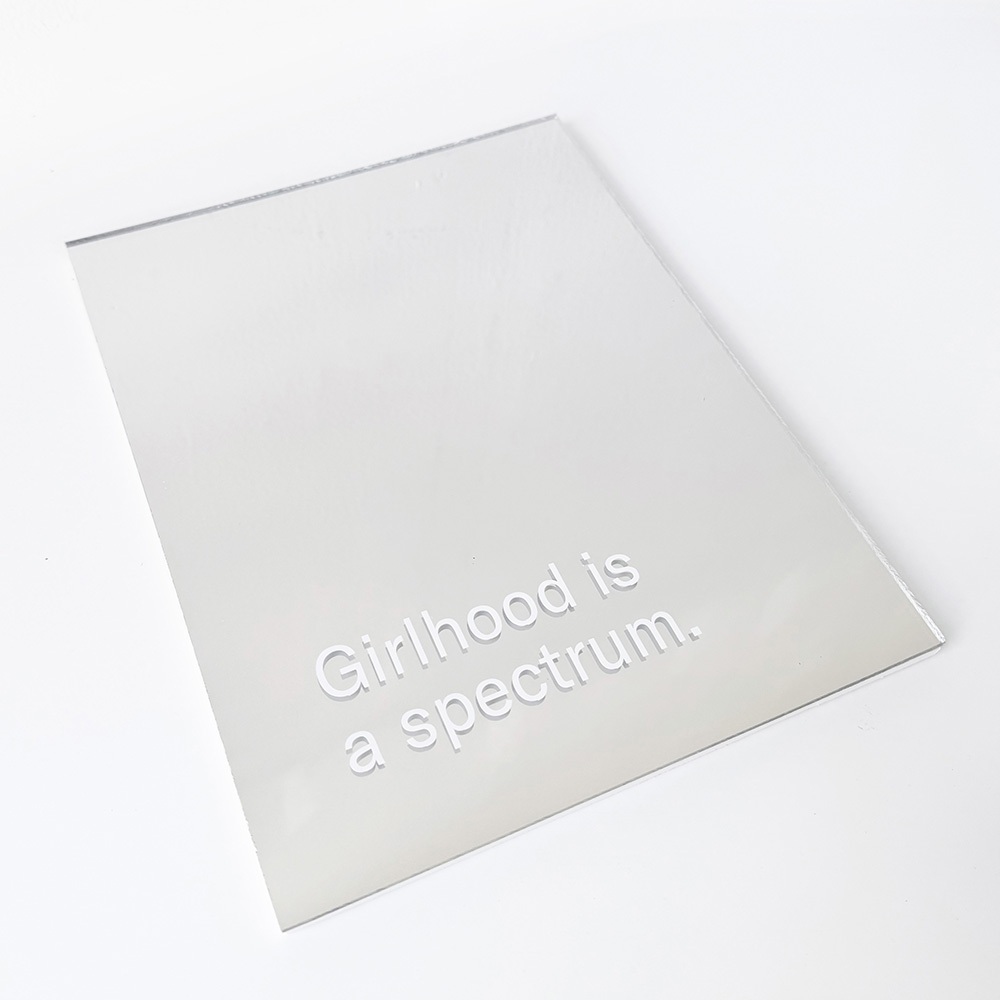
Girlhood is a spectrum. — Laura Brinin 2025
Mirror acrylic, vinyl
25 x 20 cm
$140
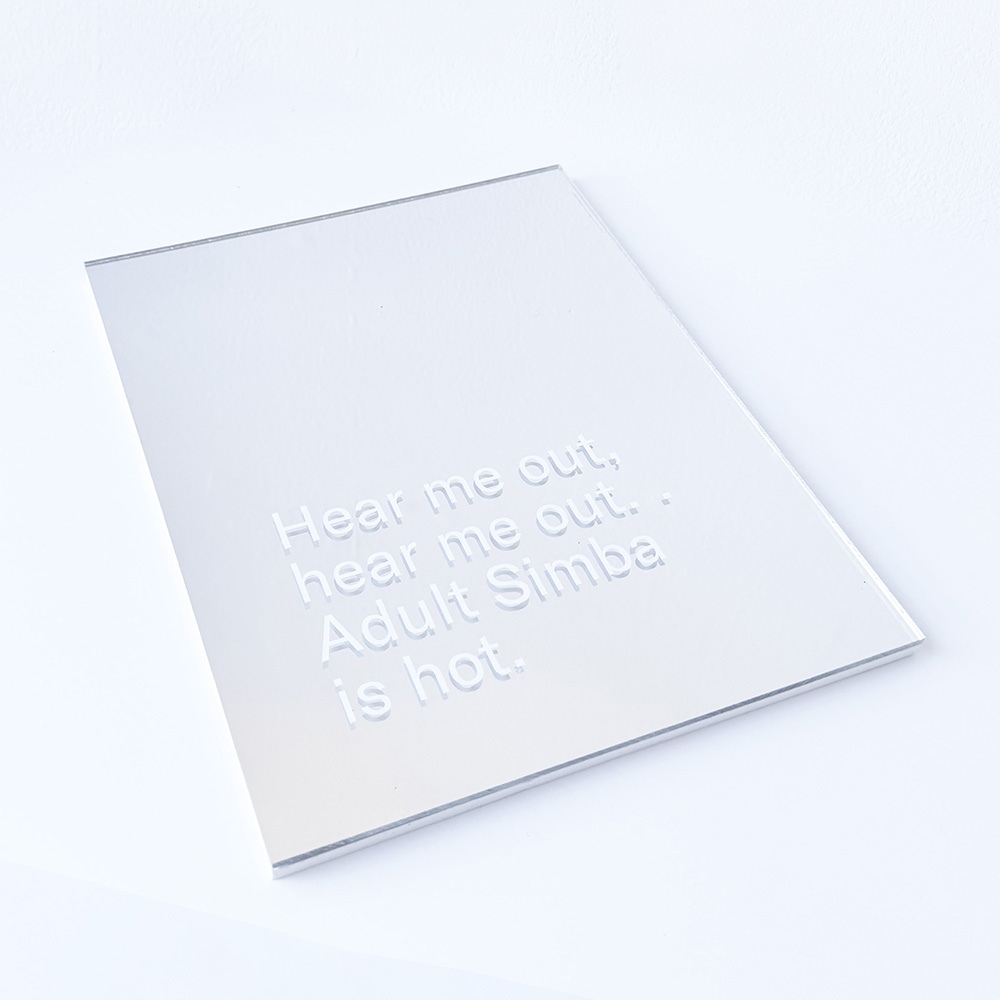
Hear me out, hear me out… Adult Simba is hot. — Laura Brinin 2025
Mirror acrylic, vinyl
25 x 20 cm
$140
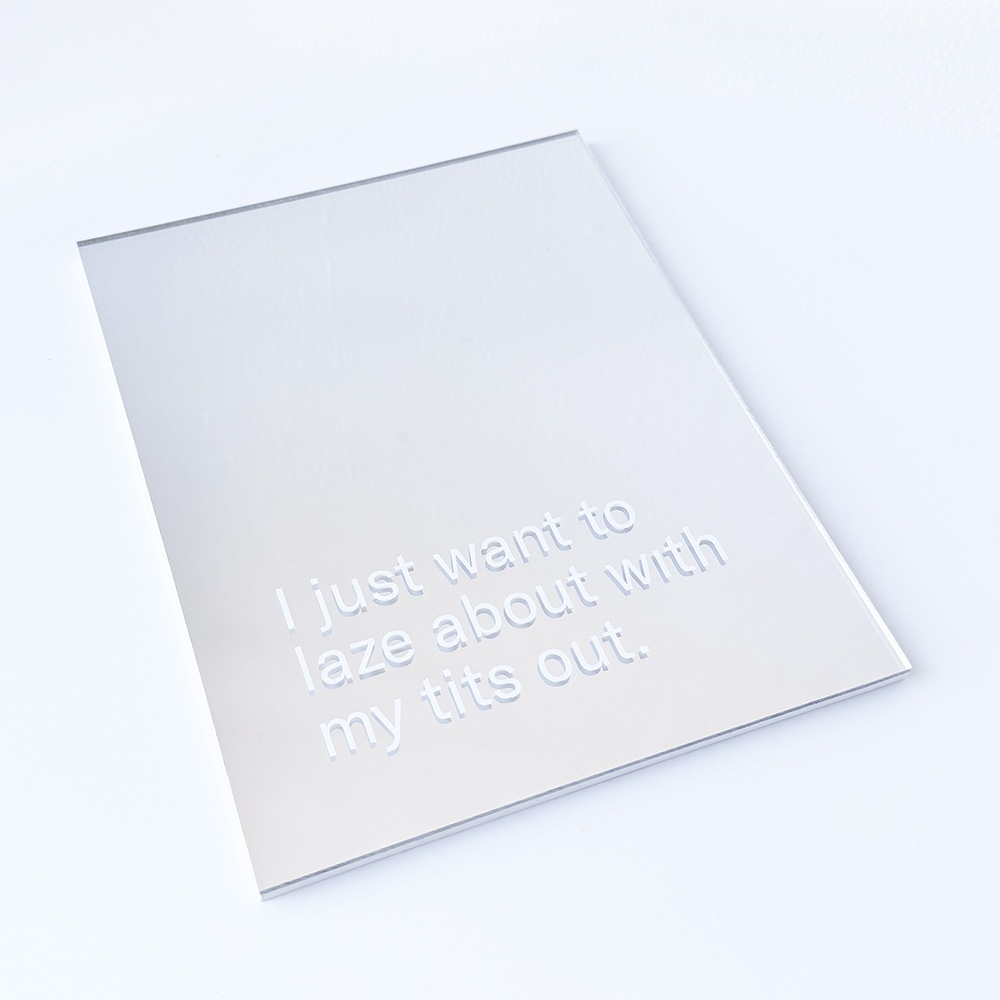 Sold
Sold
I just want to laze about with my tits out. — Laura Brinin 2025
Mirror acrylic, vinyl
25 x 20 cm
$140 Sold
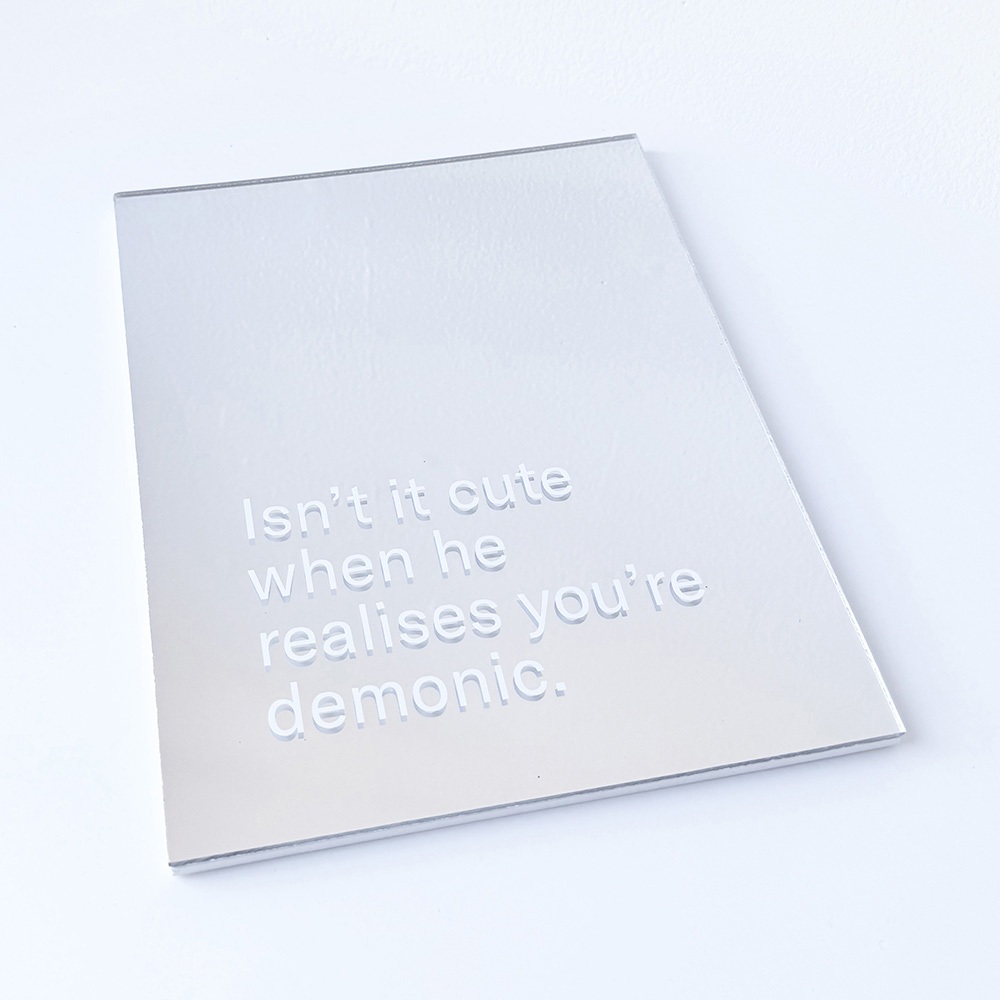
Isn’t it cute when he realises you’re demonic. — Laura Brinin 2025
Mirror acrylic, vinyl
25 x 20 cm
$140
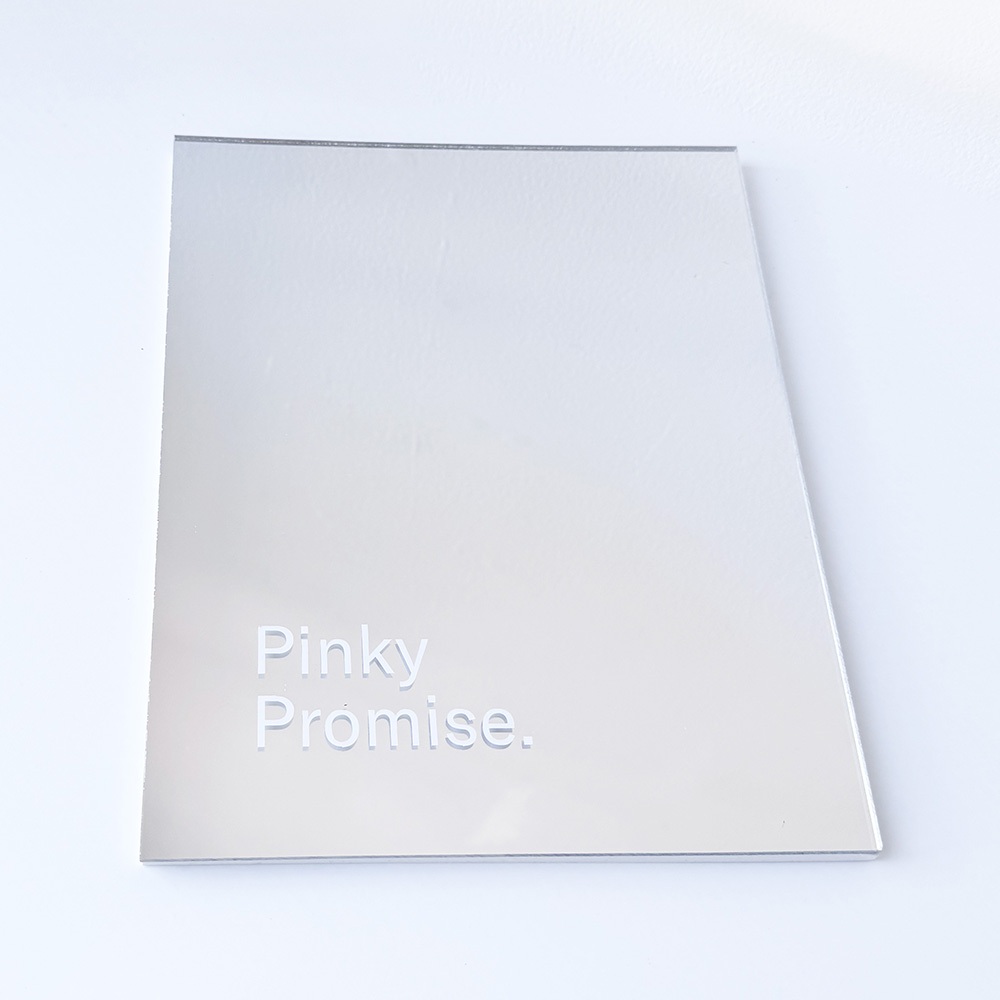 Sold
Sold
Pinky Promise. — Laura Brinin 2025
Mirror acrylic, vinyl
25 x 20 cm
$140 Sold
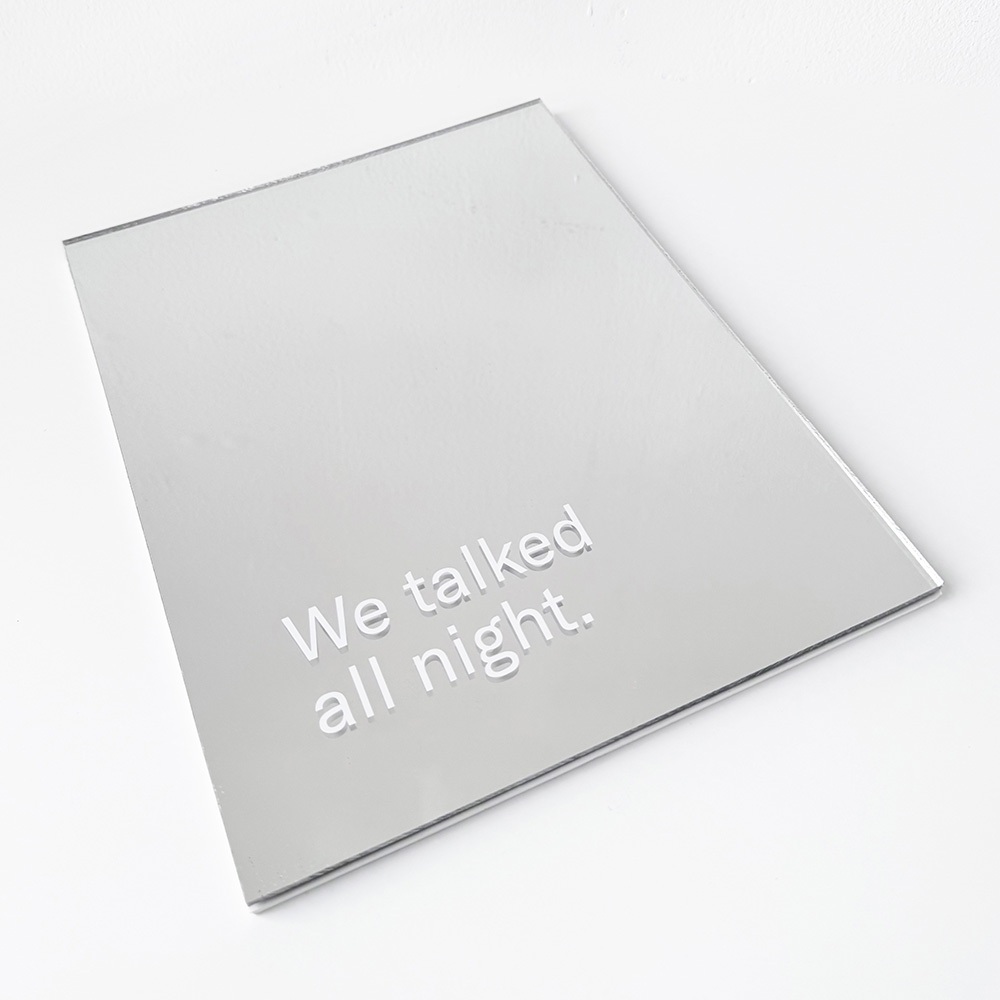 Sold
Sold
We talked all night. — Laura Brinin 2025
Mirror acrylic, vinyl
25 x 20 cm
$140 Sold
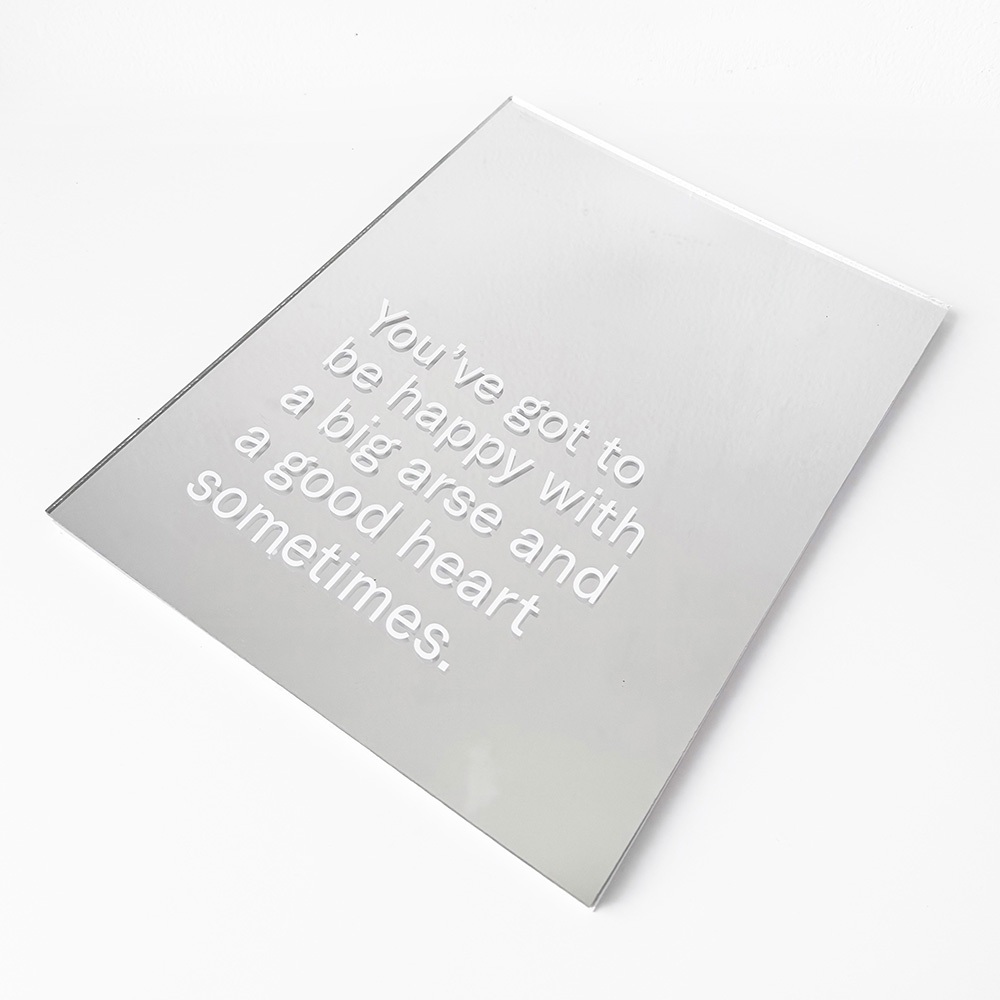 Sold
Sold
You’ve got to be happy with a big arse and a good heart sometimes. — Laura Brinin 2025
Mirror acrylic, vinyl
25 x 20 cm
$140 Sold
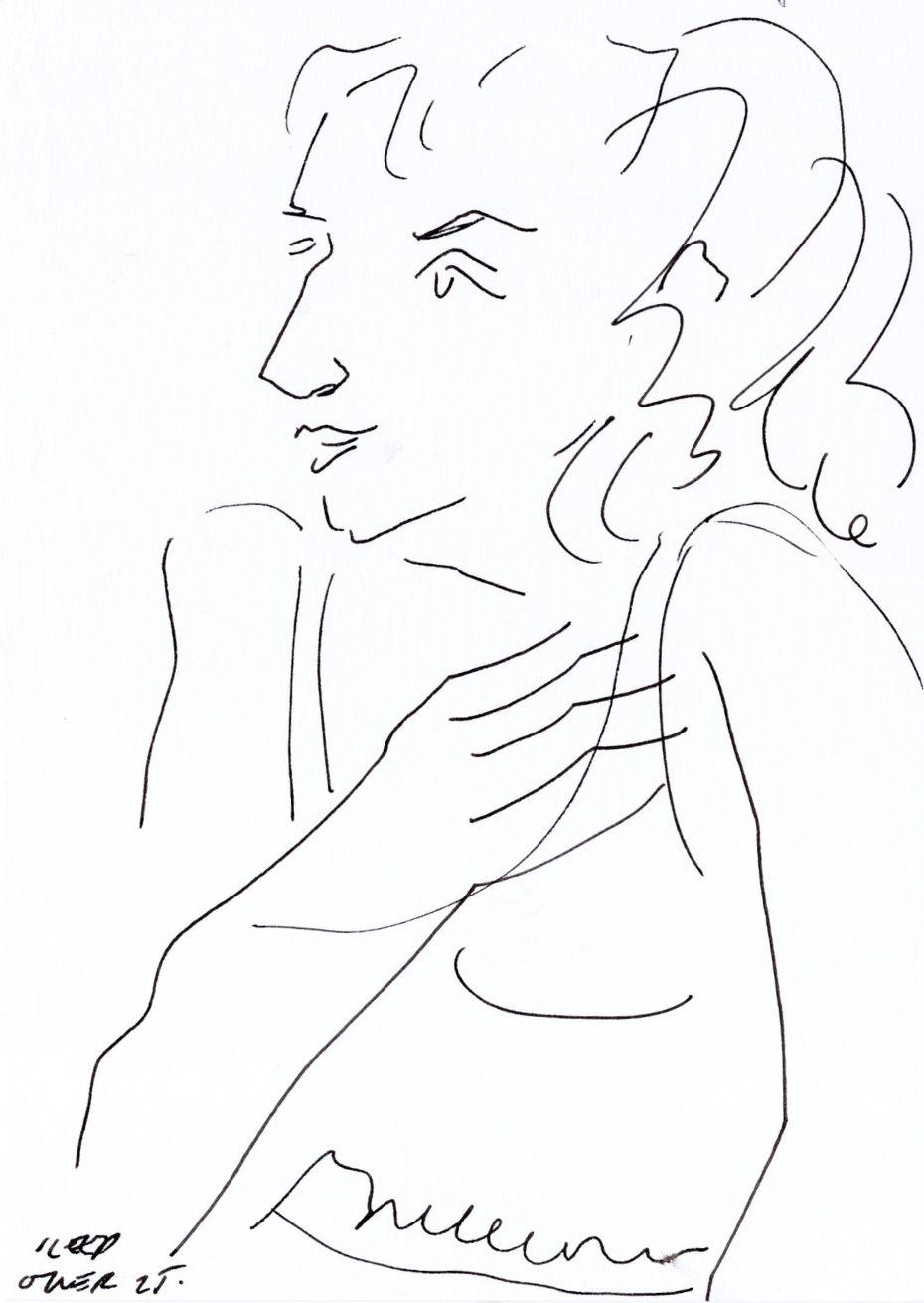
Aghast — Frances Caro 2025
Ink on paper
14.8 x 10.5 cm
$50

Bedside Treats — Frances Caro 2025
Ink on paper
14.8 x 10.5 cm
$50
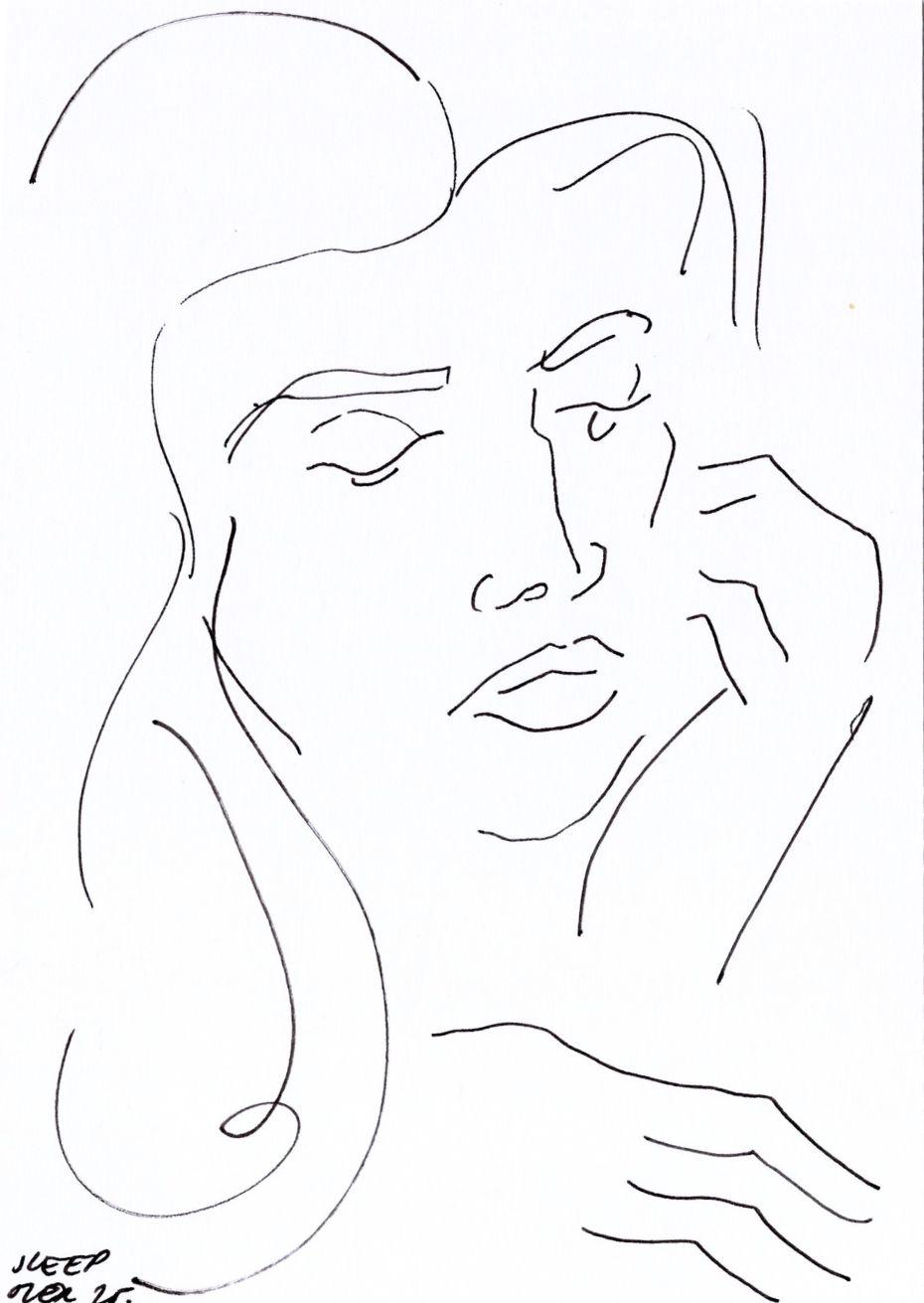
Bell Jar — Frances Caro 2025
Ink on paper
14.8 x 10.5 cm
$50
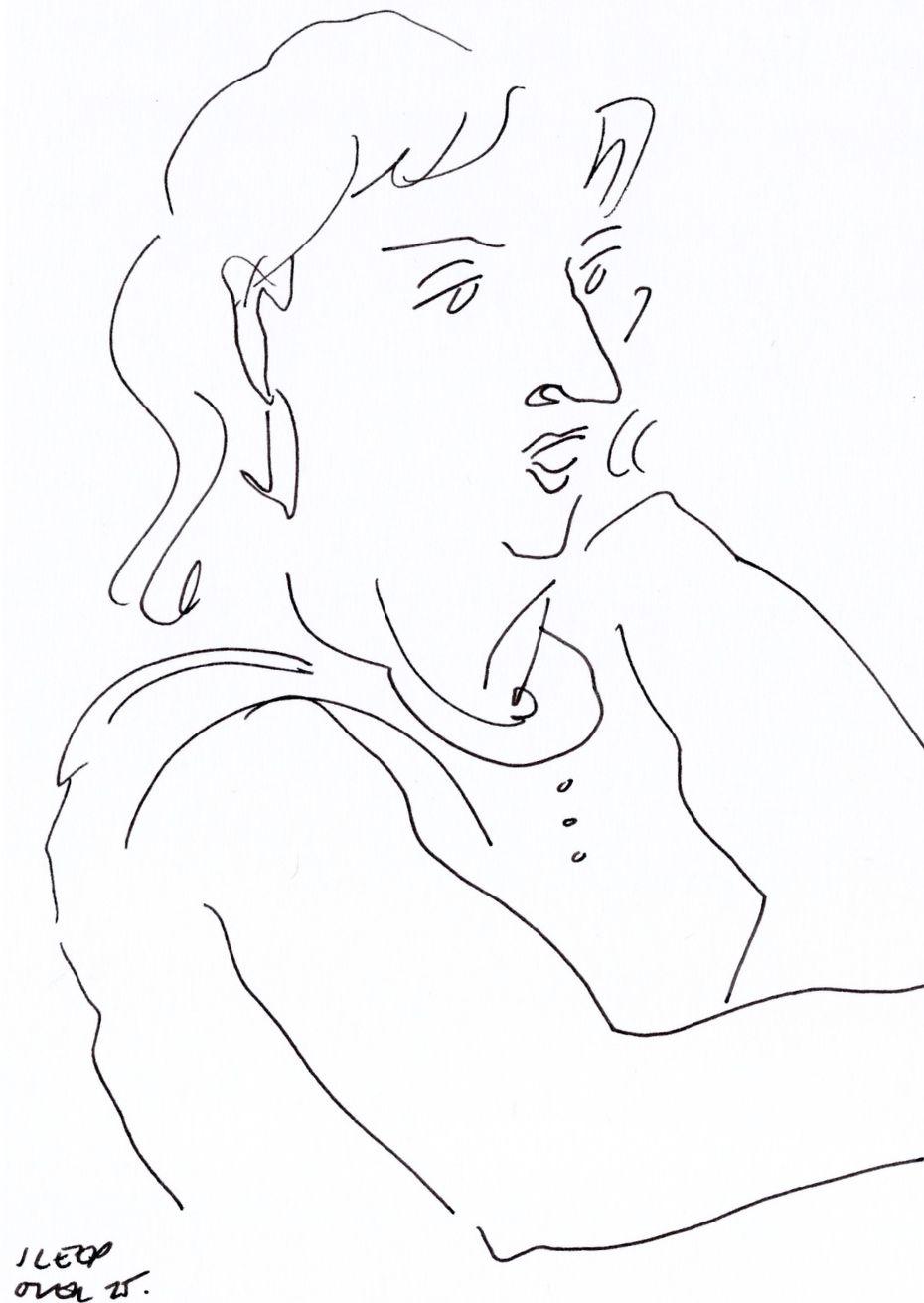
Betrayal — Frances Caro 2025
Ink on paper
14.8 x 10.5 cm
$50
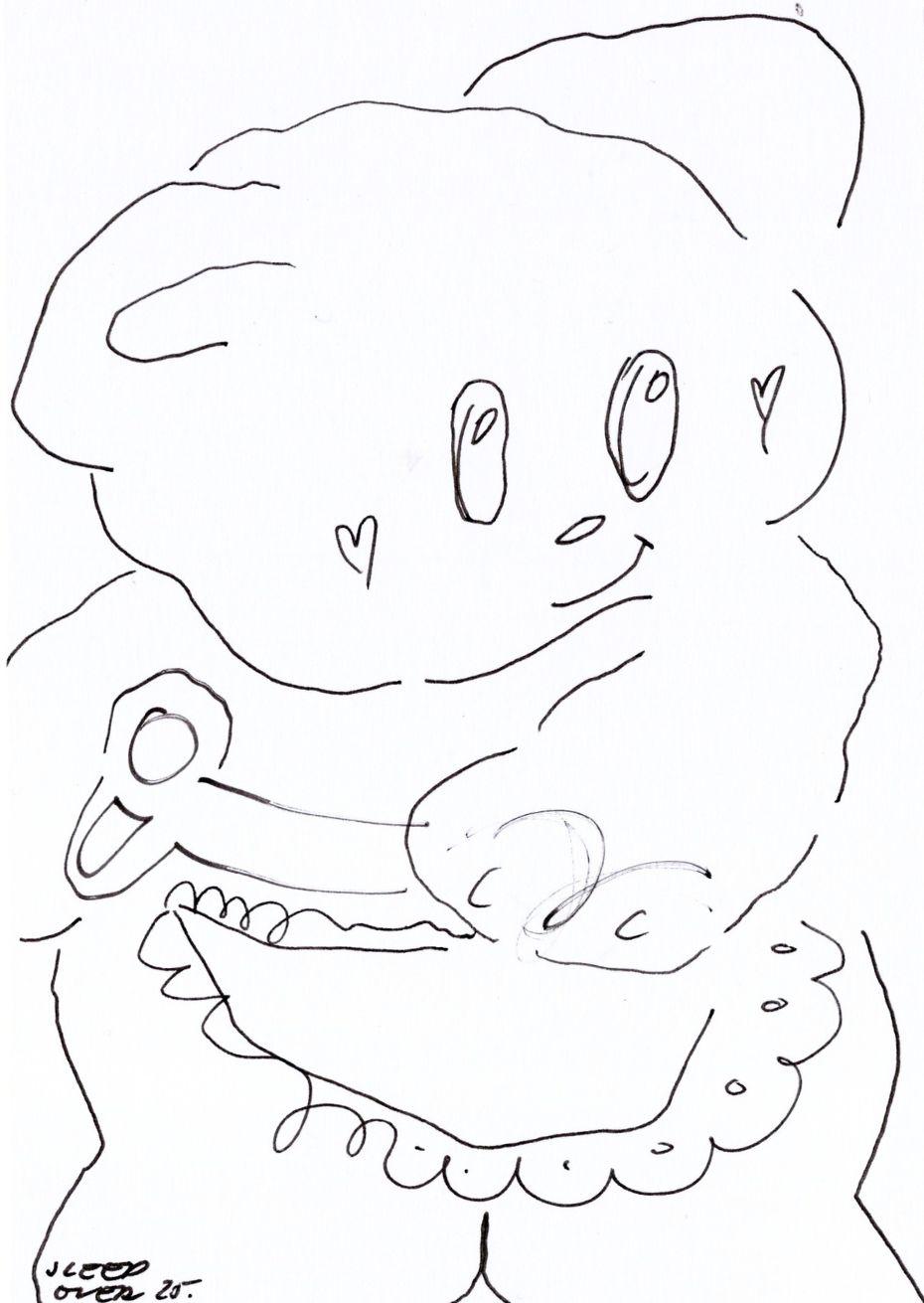 Sold
Sold
Butter Bear I — Frances Caro 2025
Ink on paper
14.8 x 10.5 cm
$50 Sold
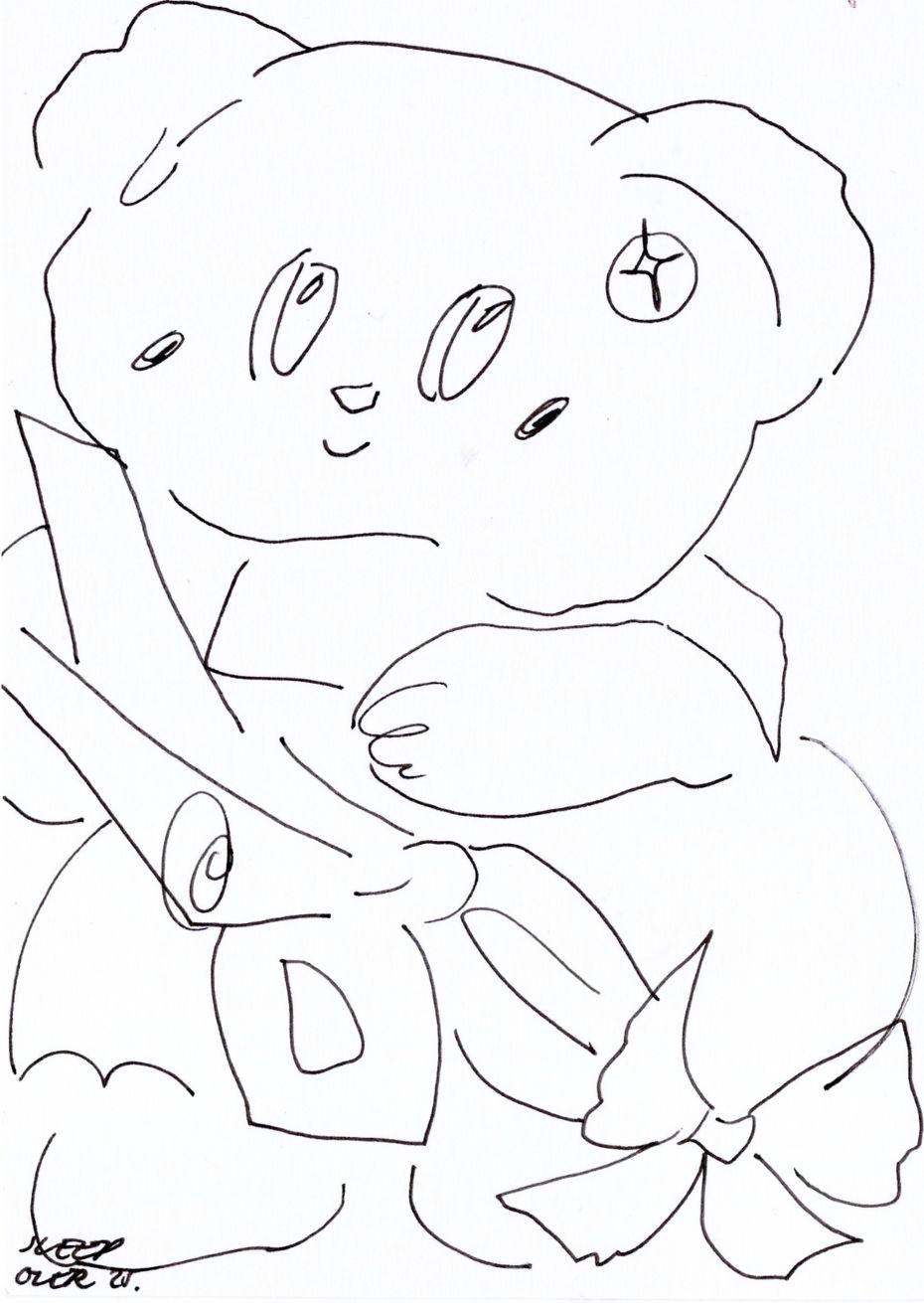
Butter Bear Ii — Frances Caro 2025
Ink on paper
14.8 x 10.5 cm
$50
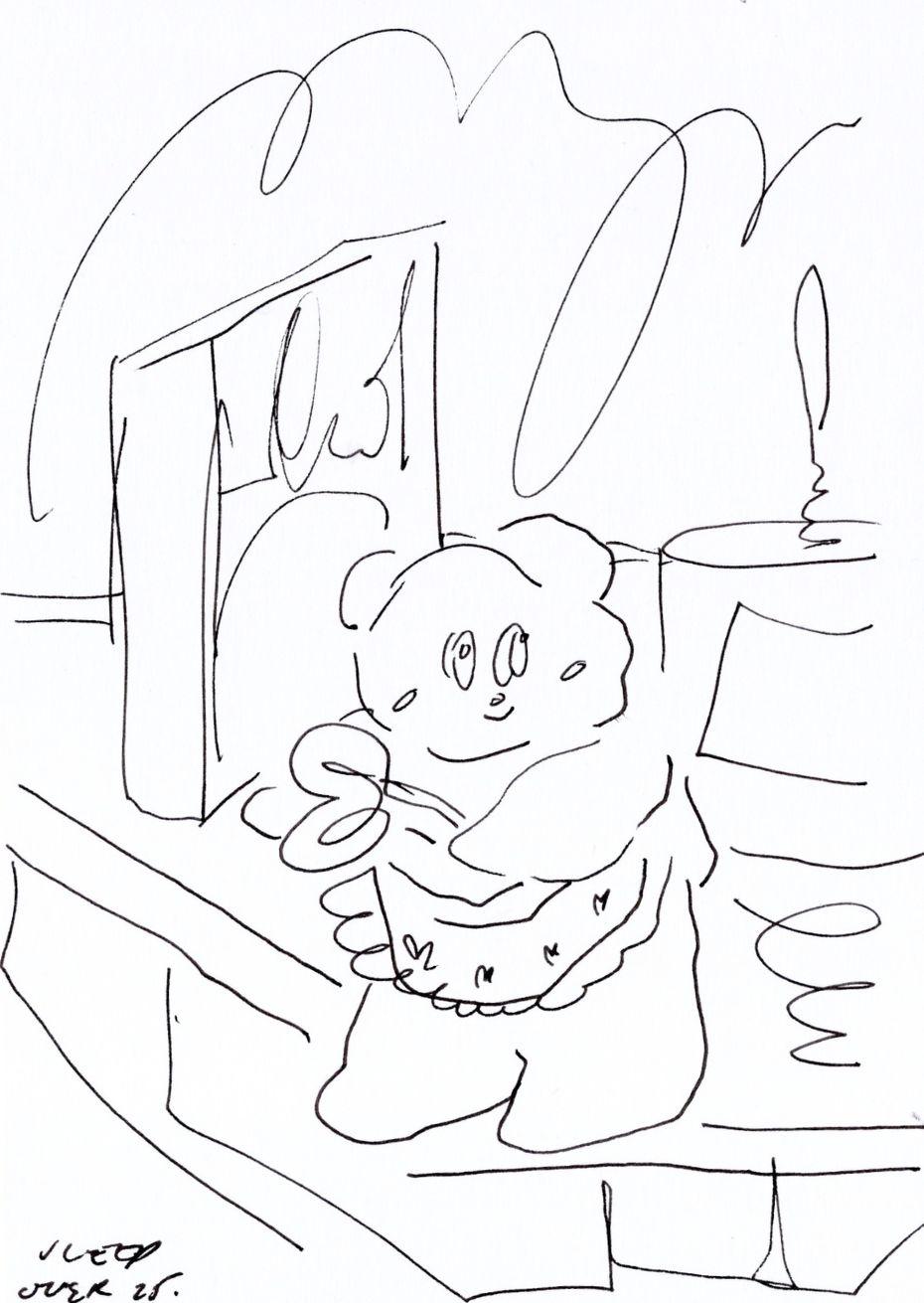
Butterbear Bedside — Frances Caro 2025
Ink on paper
14.8 x 10.5 cm
$50
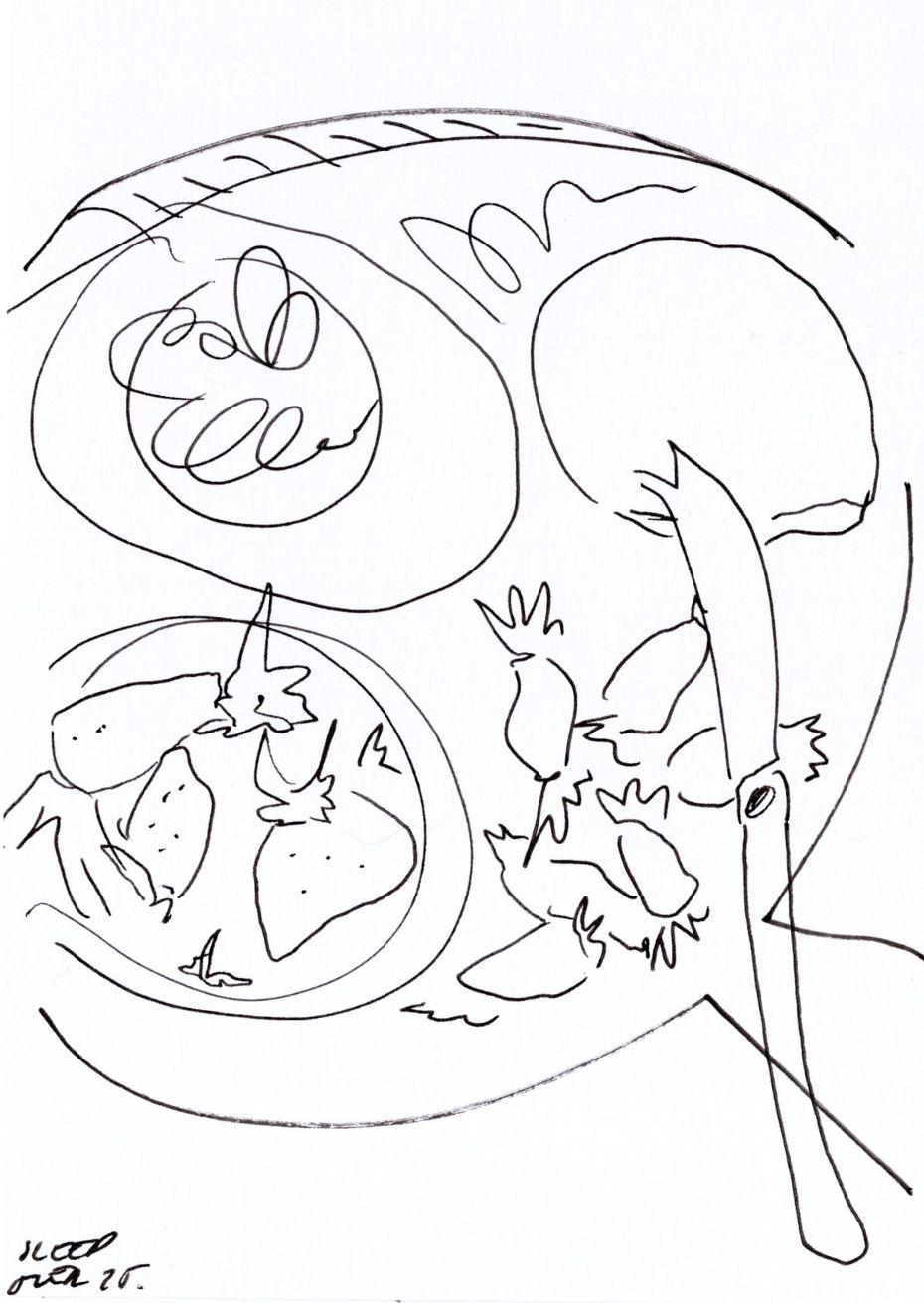
Charcoochie — Frances Caro 2025
Ink on paper
14.8 x 10.5 cm
$50
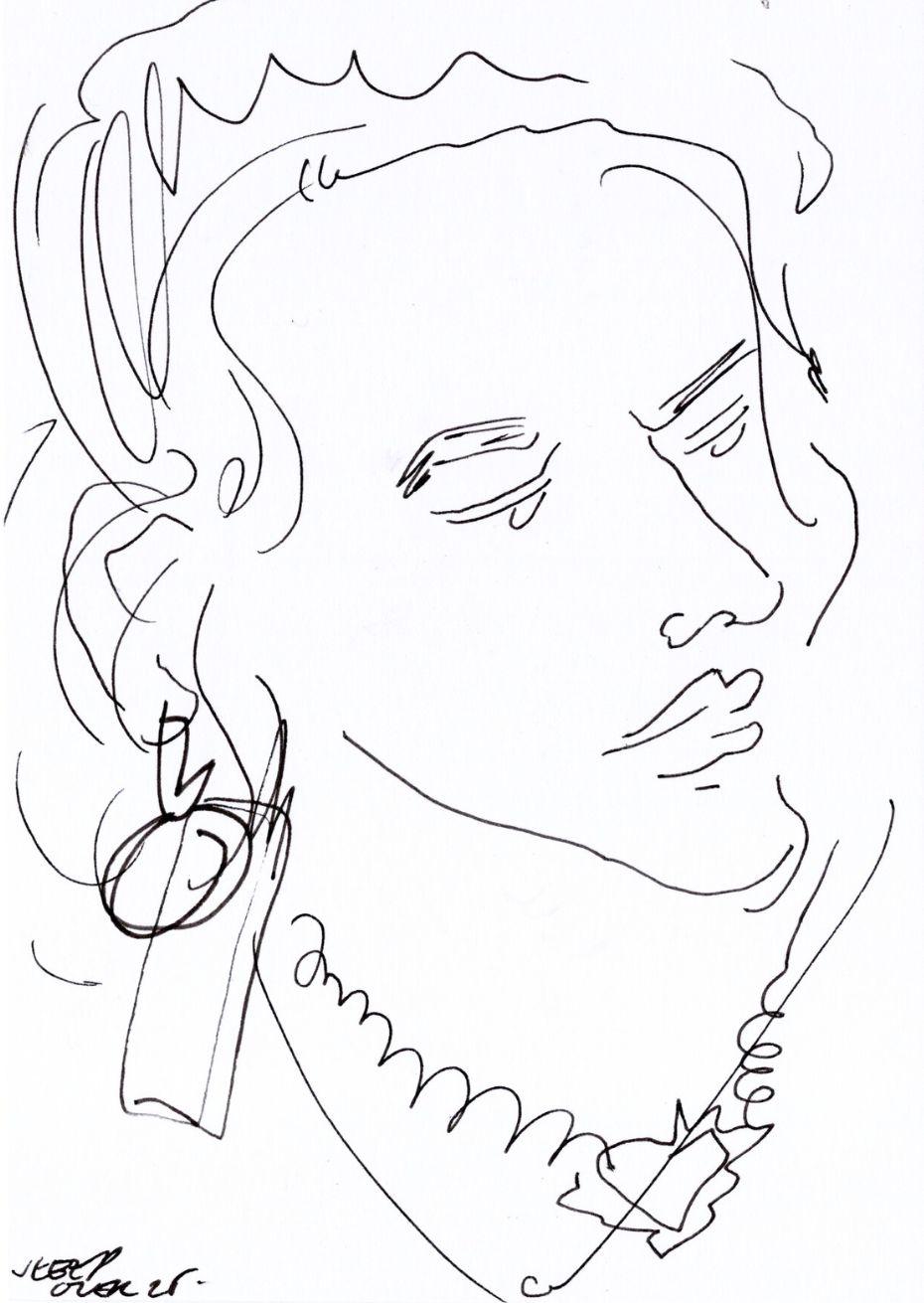
Confessionals I — Frances Caro 2025
Ink on paper
14.8 x 10.5 cm
$50
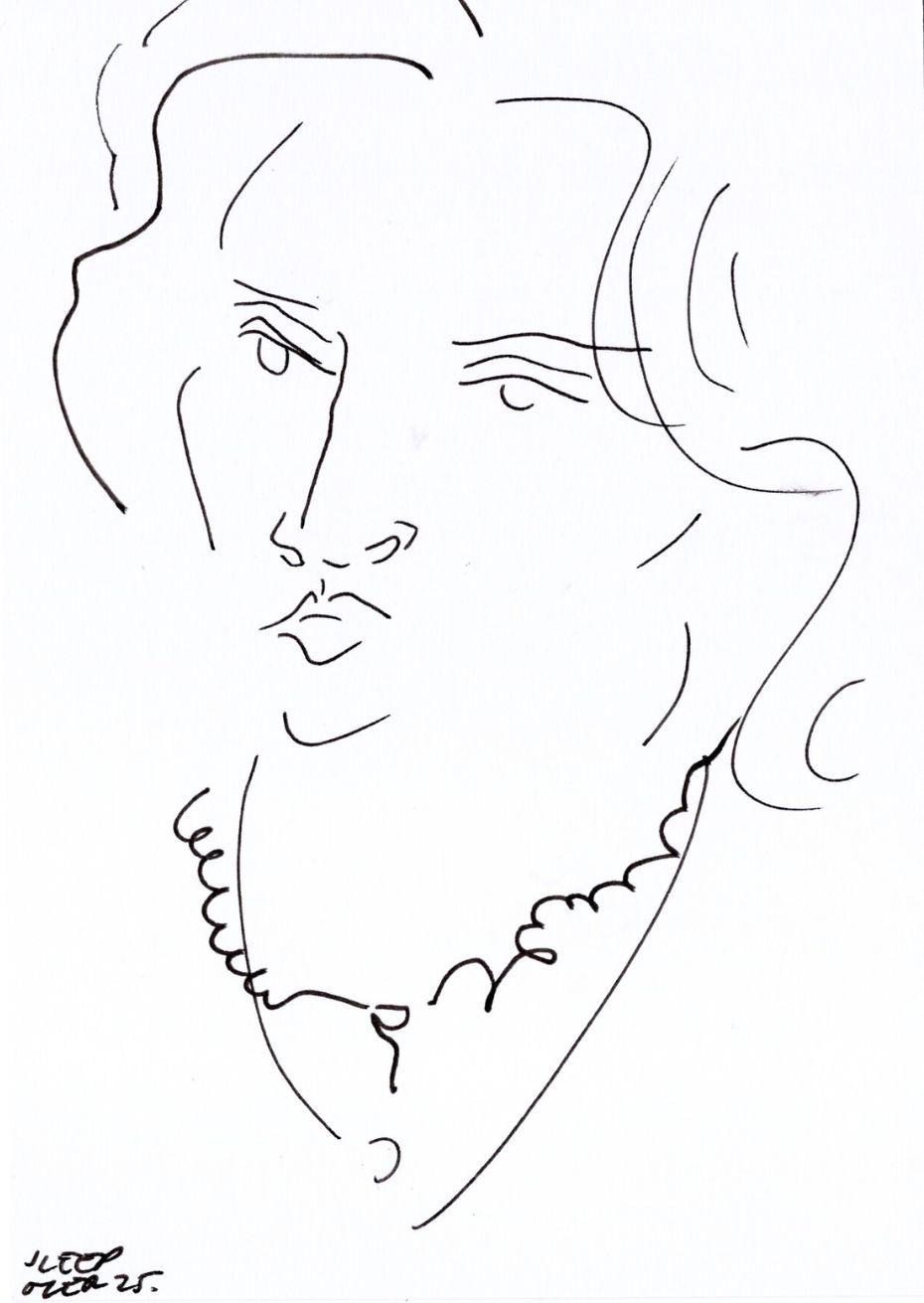
Confessionals Ii — Frances Caro 2025
Ink on paper
14.8 x 10.5 cm
$50
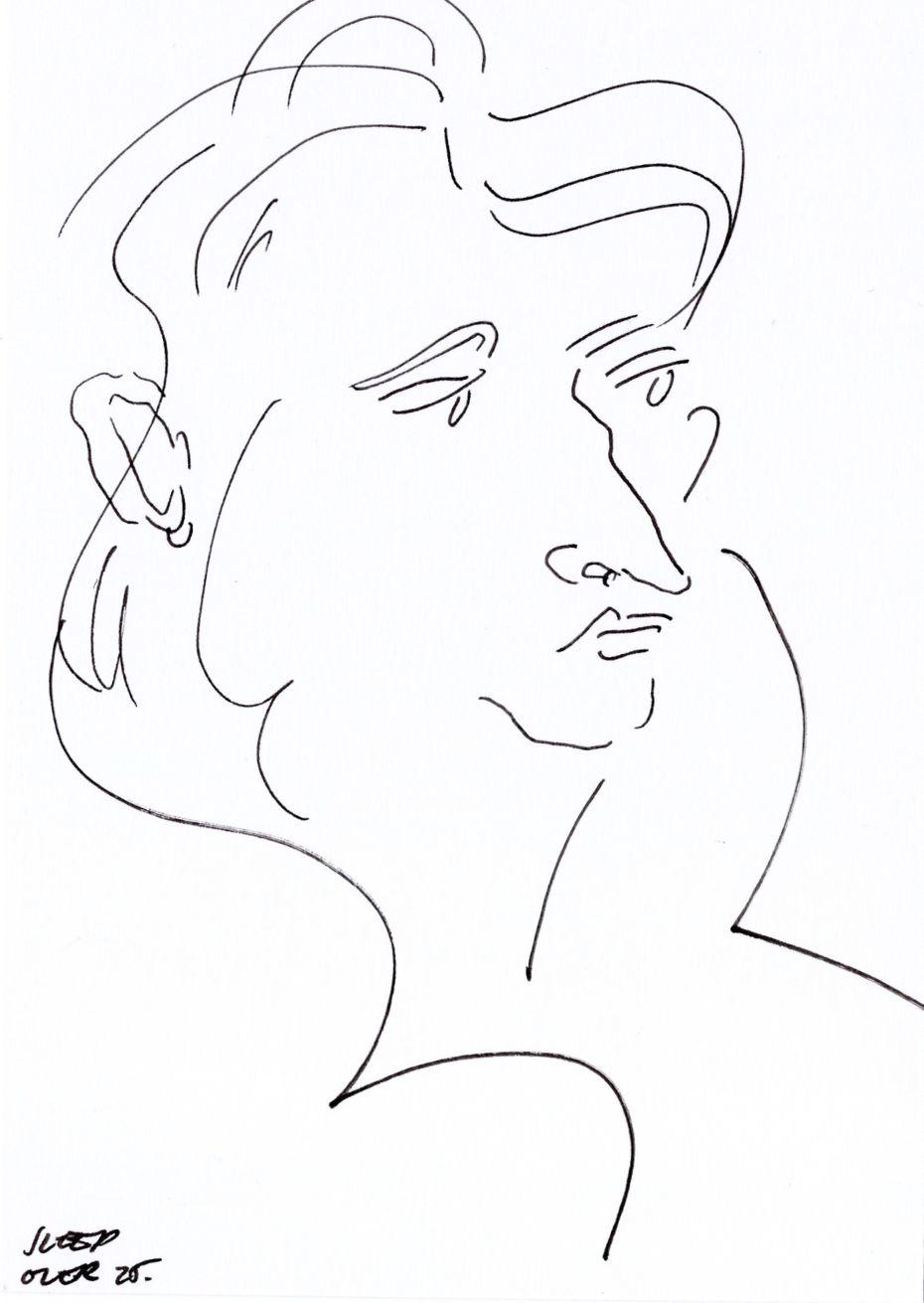
Doubtful — Frances Caro 2025
Ink on paper
14.8 x 10.5 cm
$50

Glitter Bag — Frances Caro 2025
Ink on paper
14.8 x 10.5 cm
$50
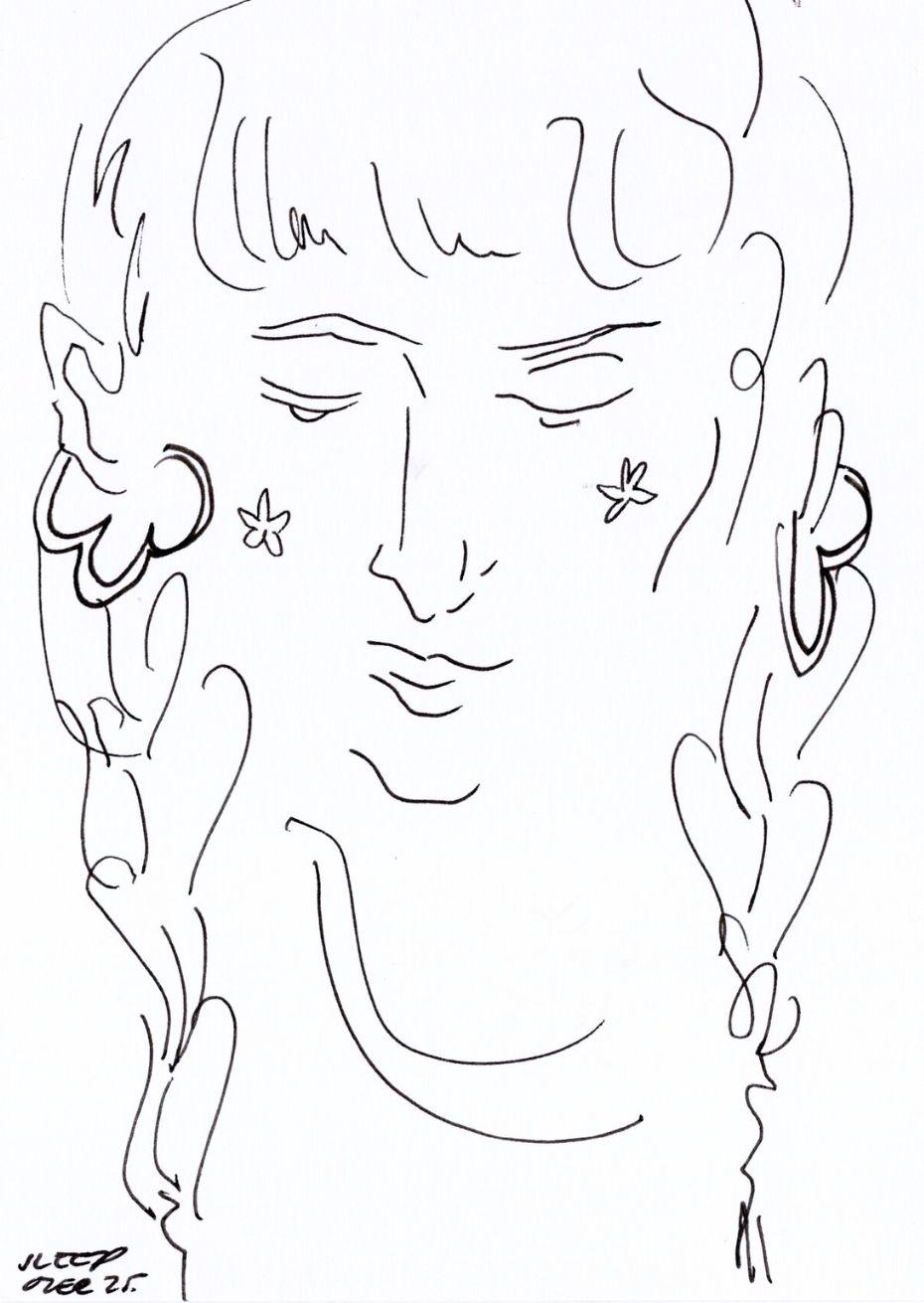
Glitter Cheeks — Frances Caro 2025
Ink on paper
14.8 x 10.5 cm
$50
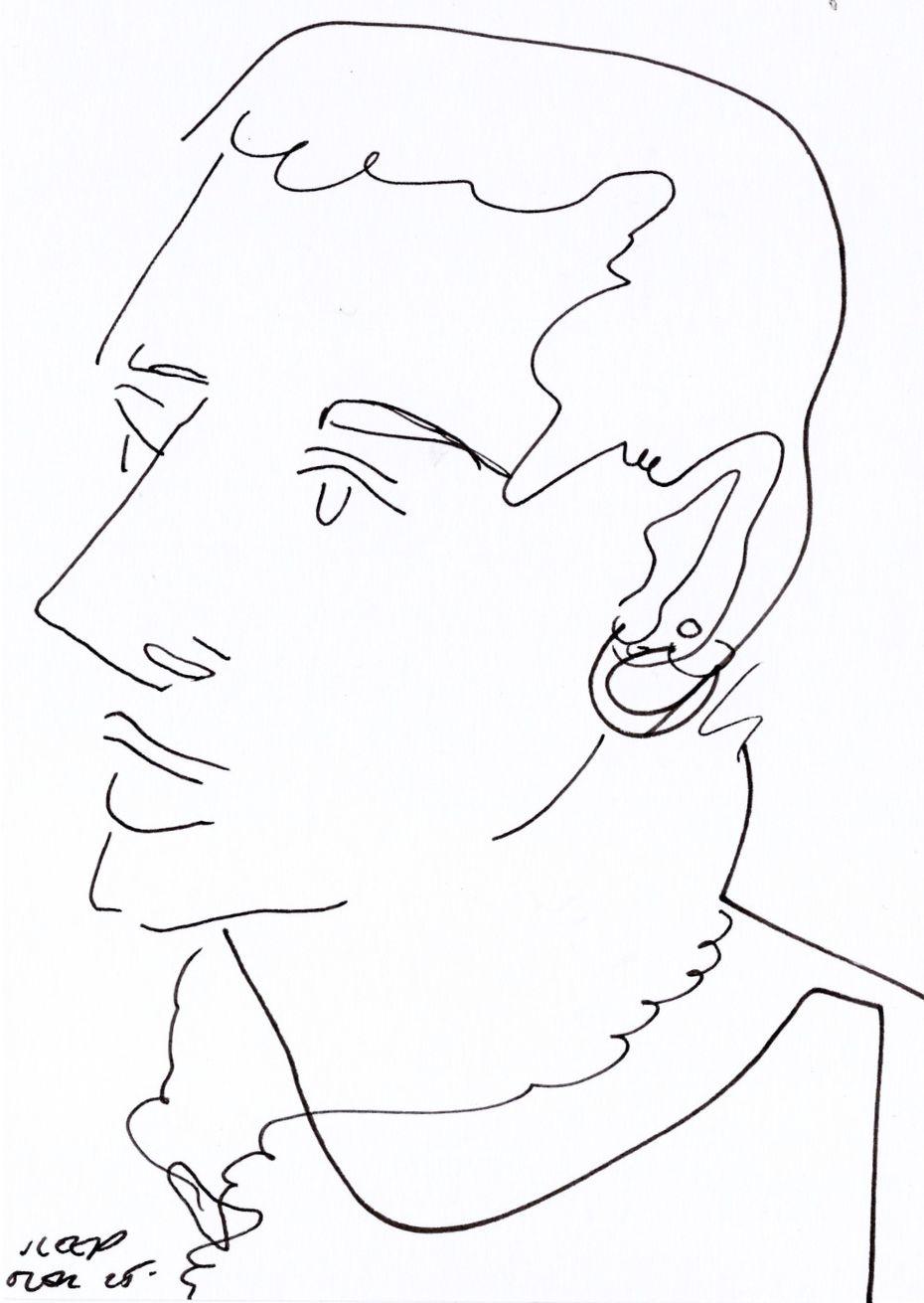
Heart Enclosed — Frances Caro 2025
Ink on paper
14.8 x 10.5 cm
$50
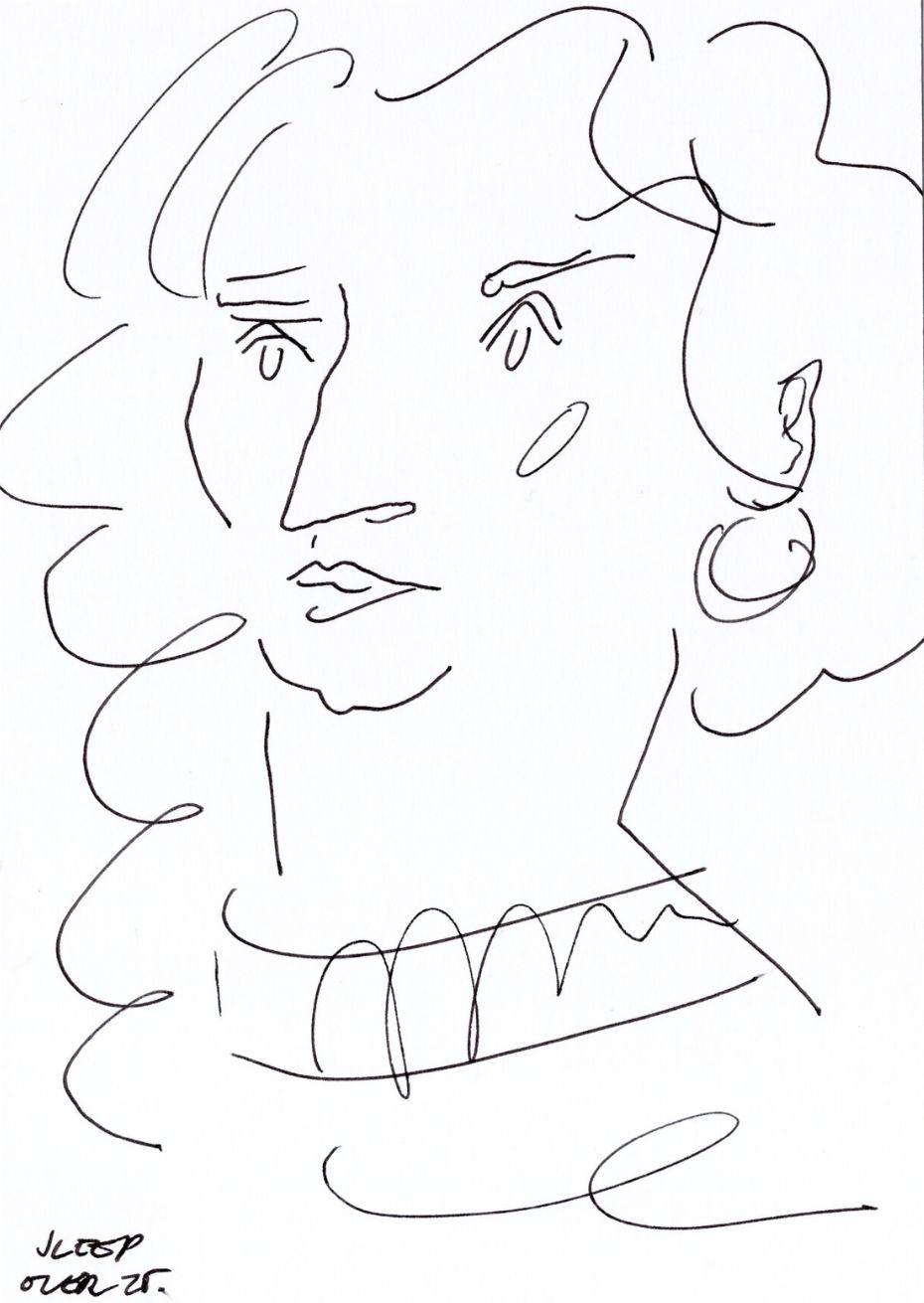
Indignant — Frances Caro 2025
Ink on paper
14.8 x 10.5 cm
$50
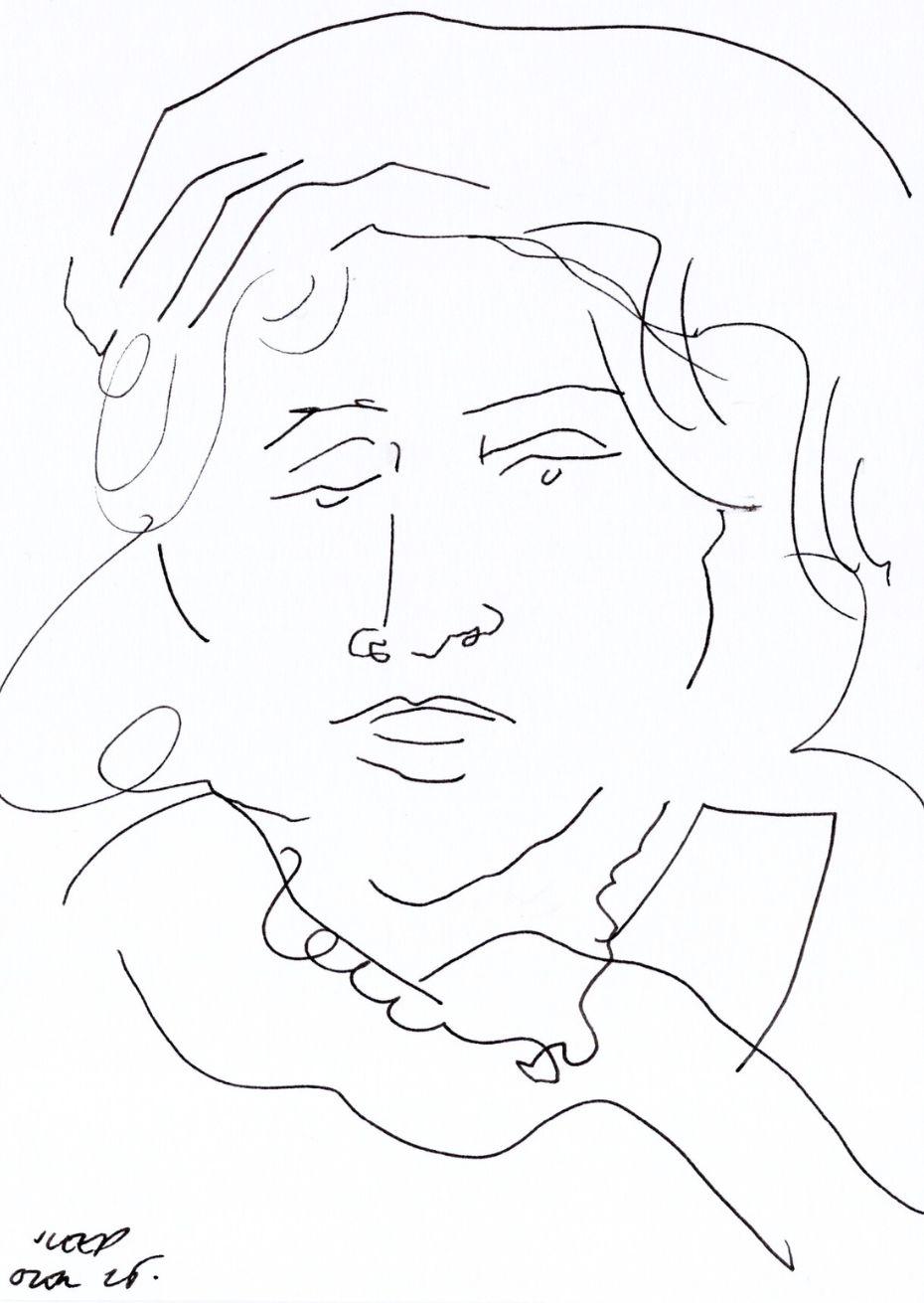
Lazing — Frances Caro 2025
Ink on paper
14.8 x 10.5 cm
$50
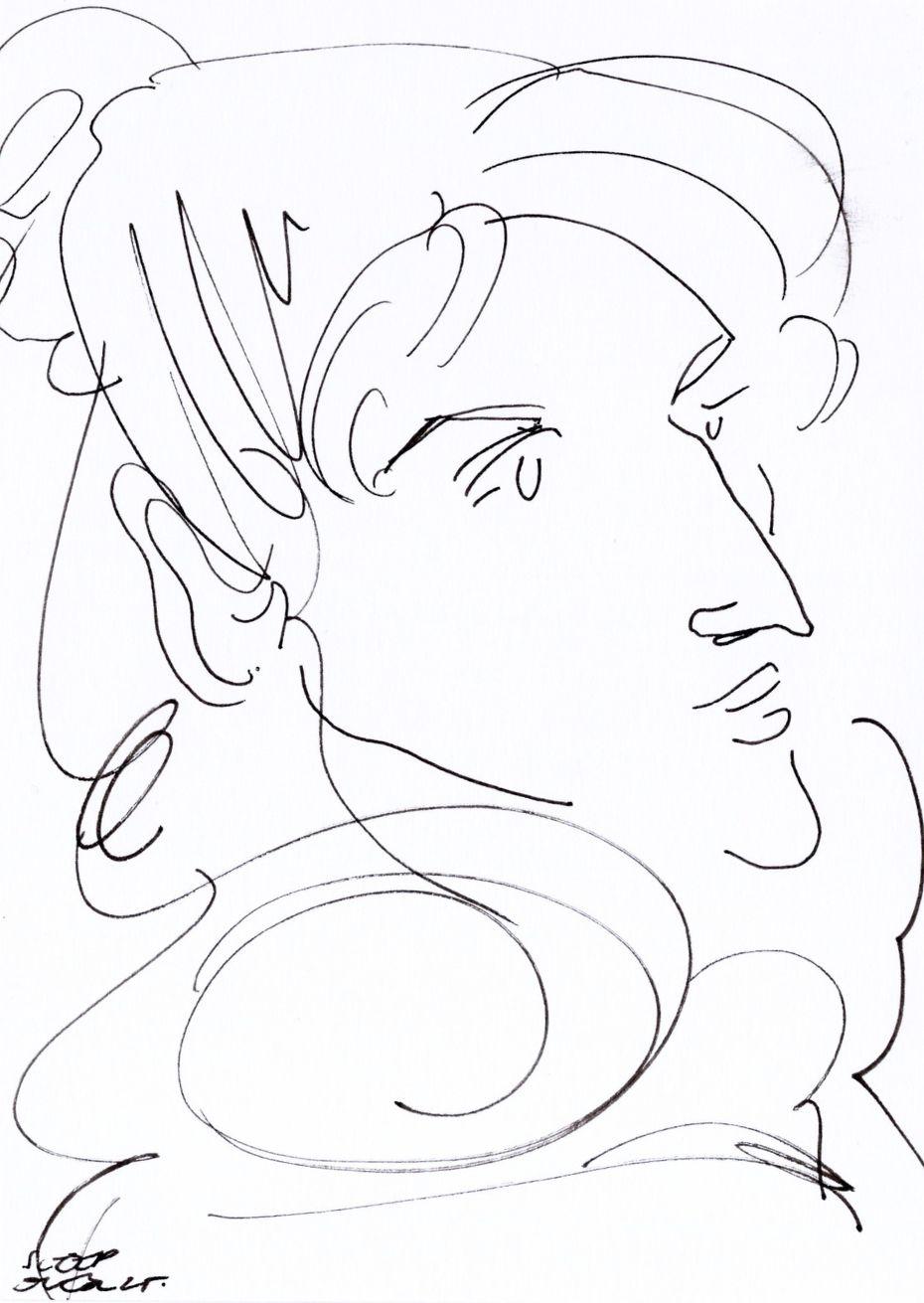
Observing — Frances Caro 2025
Ink on paper
14.8 x 10.5 cm
$50
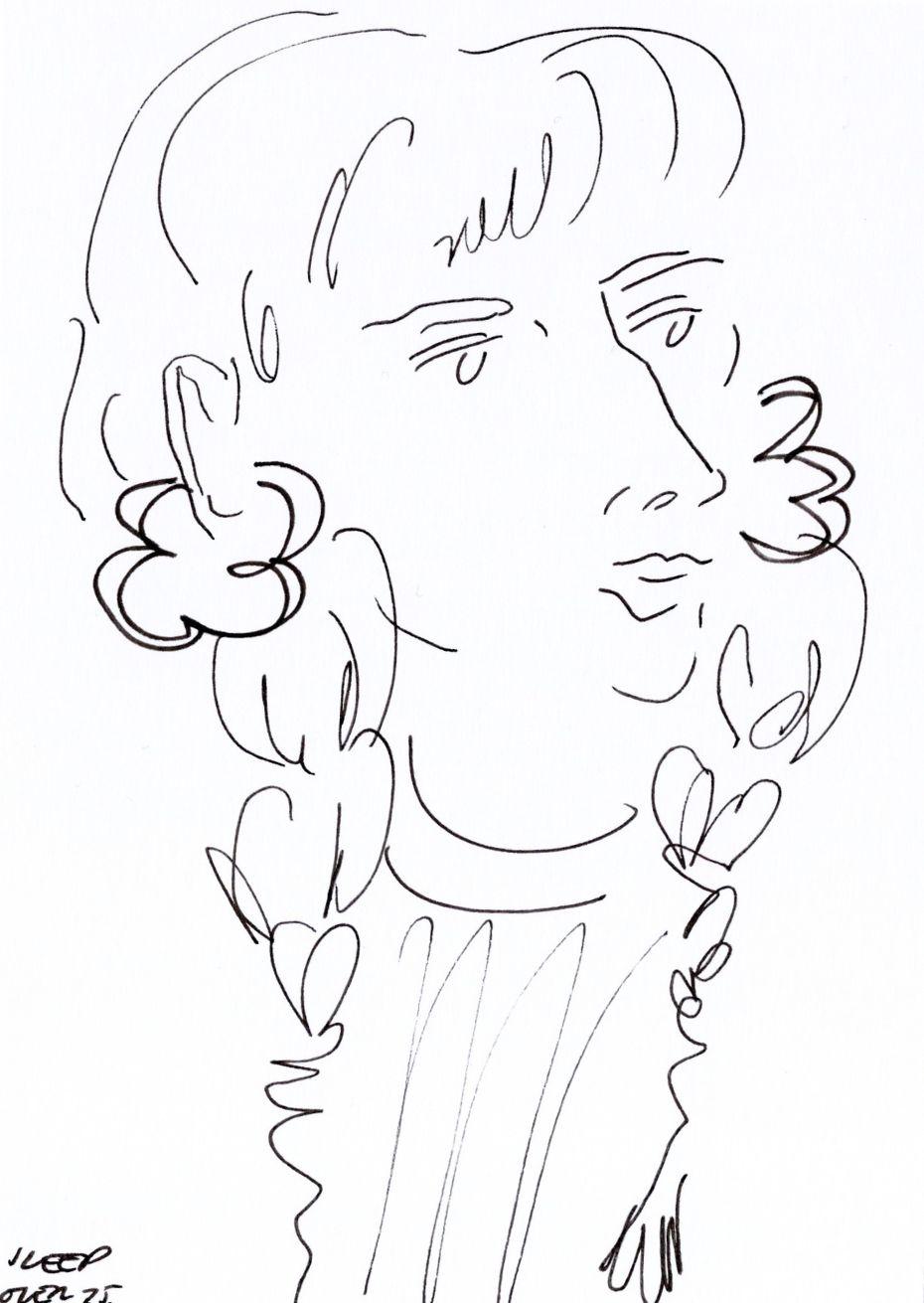
Sharing — Frances Caro 2025
Ink on paper
14.8 x 10.5 cm
$50
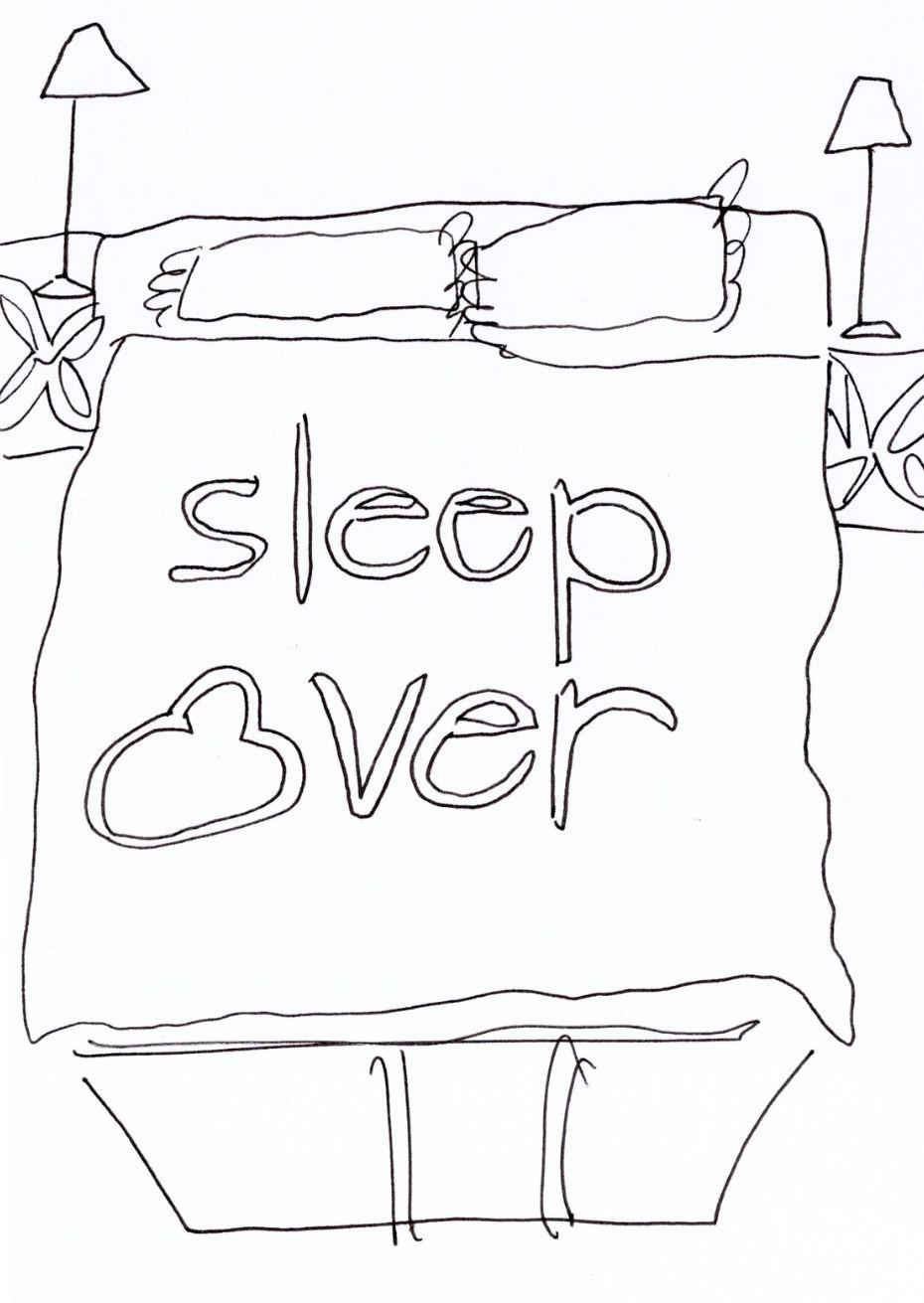
Sleep Over — Frances Caro 2025
Ink on paper
14.8 x 10.5 cm
$50
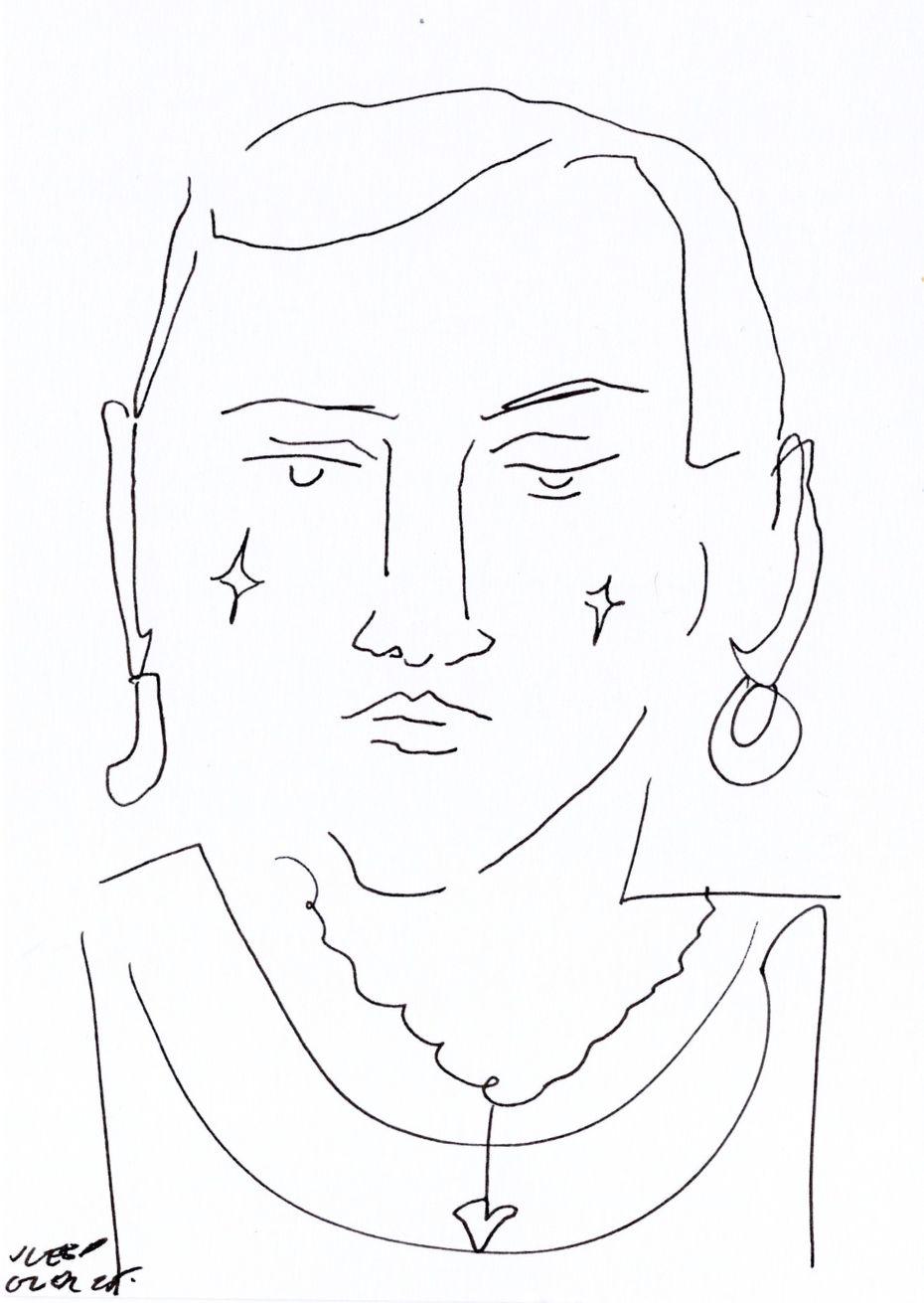
Star Tears — Frances Caro 2025
Ink on paper
14.8 x 10.5 cm
$50
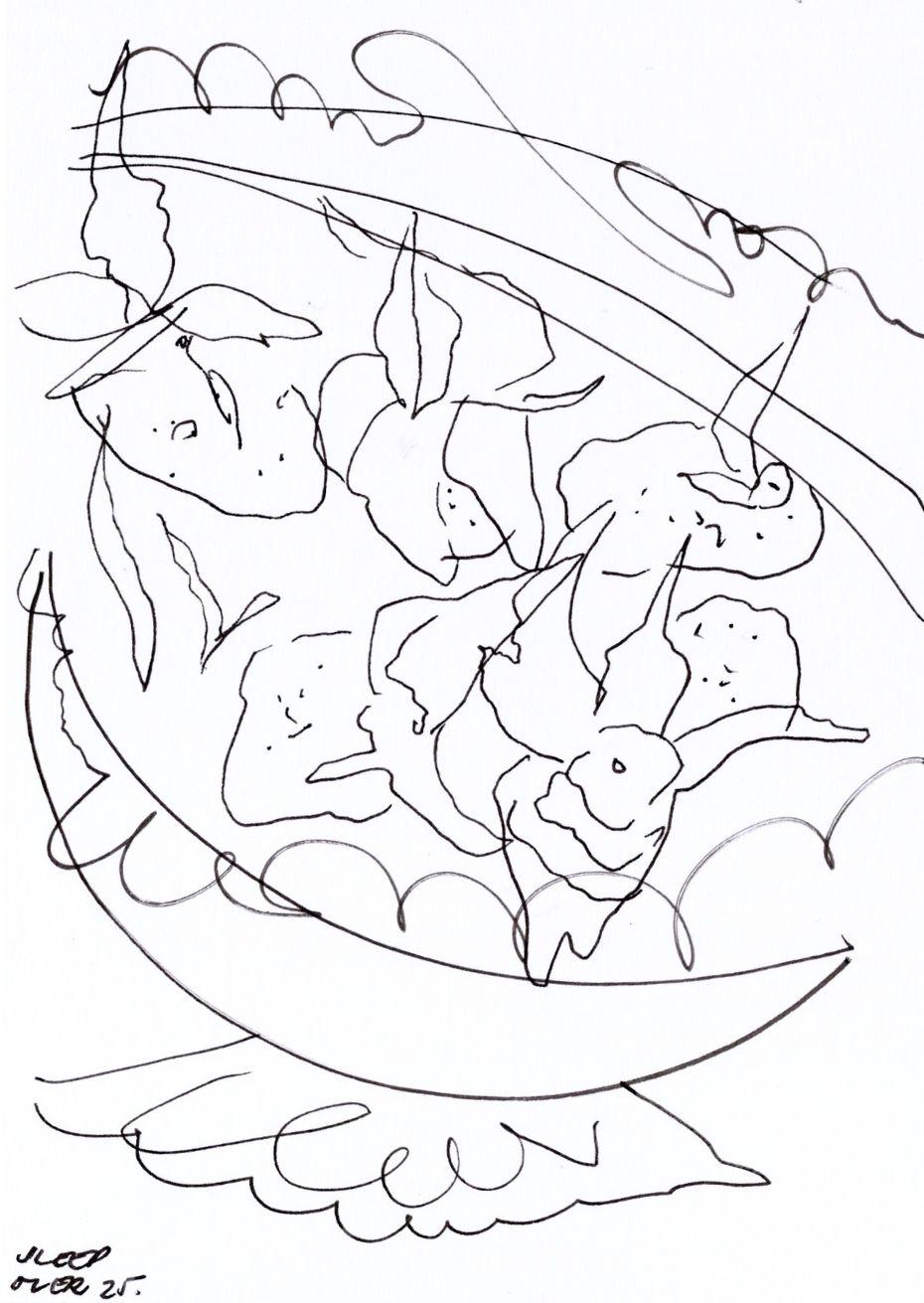
Strawberry Bowl — Frances Caro 2025
Ink on paper
14.8 x 10.5 cm
$50
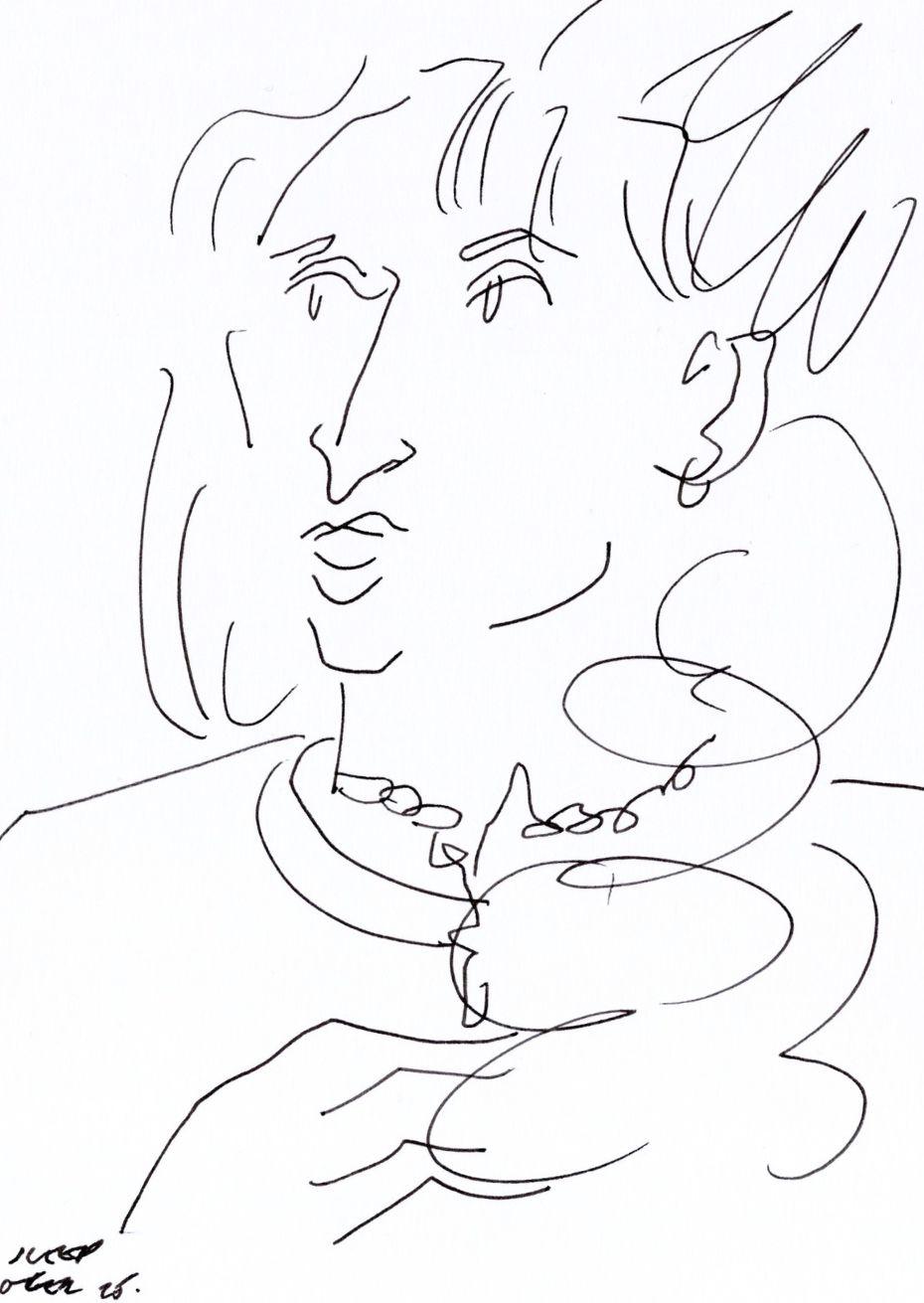
Surprising Behaviour — Frances Caro 2025
Ink on paper
14.8 x 10.5 cm
$50
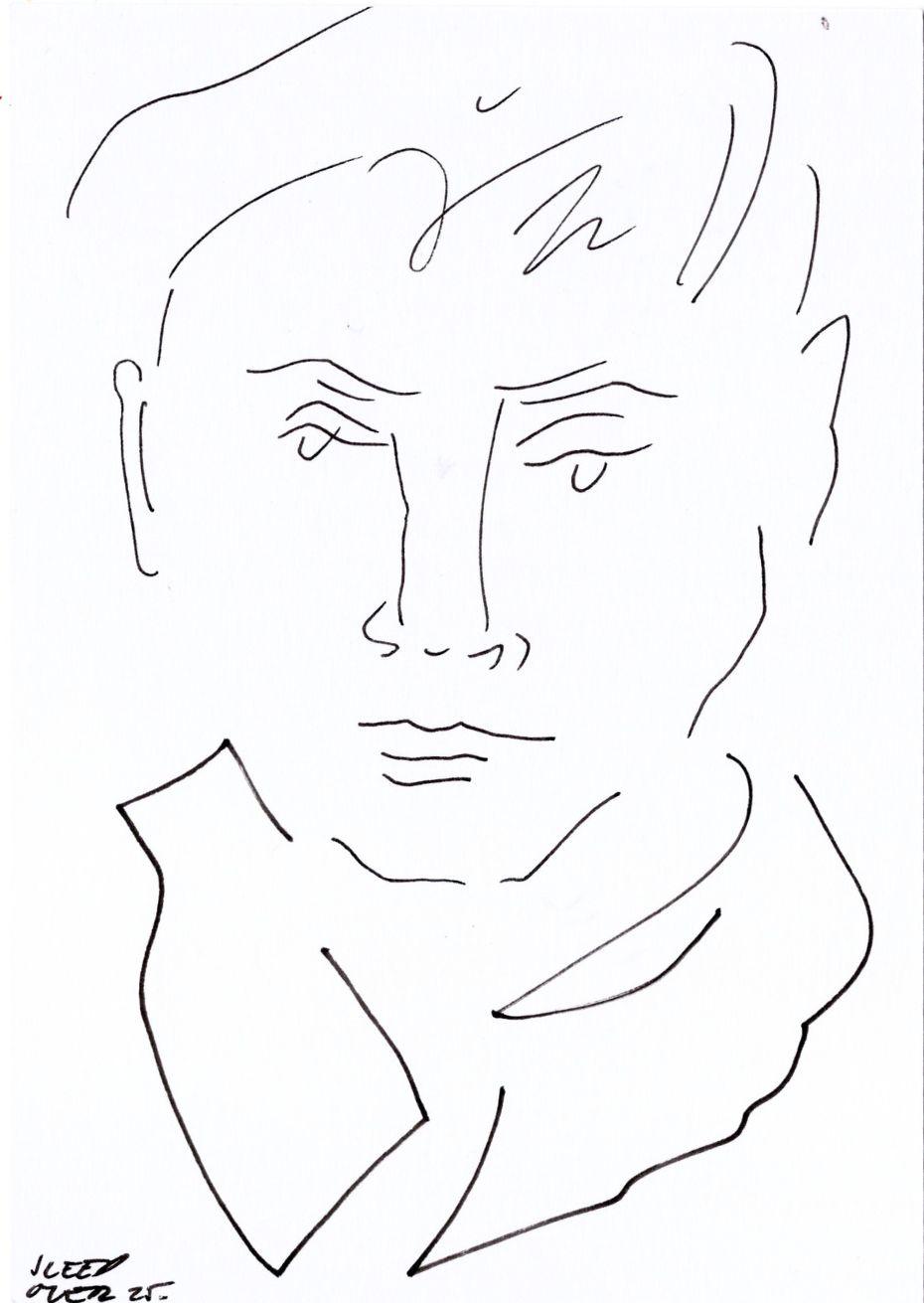
Suspicious — Frances Caro 2025
Ink on paper
14.8 x 10.5 cm
$50
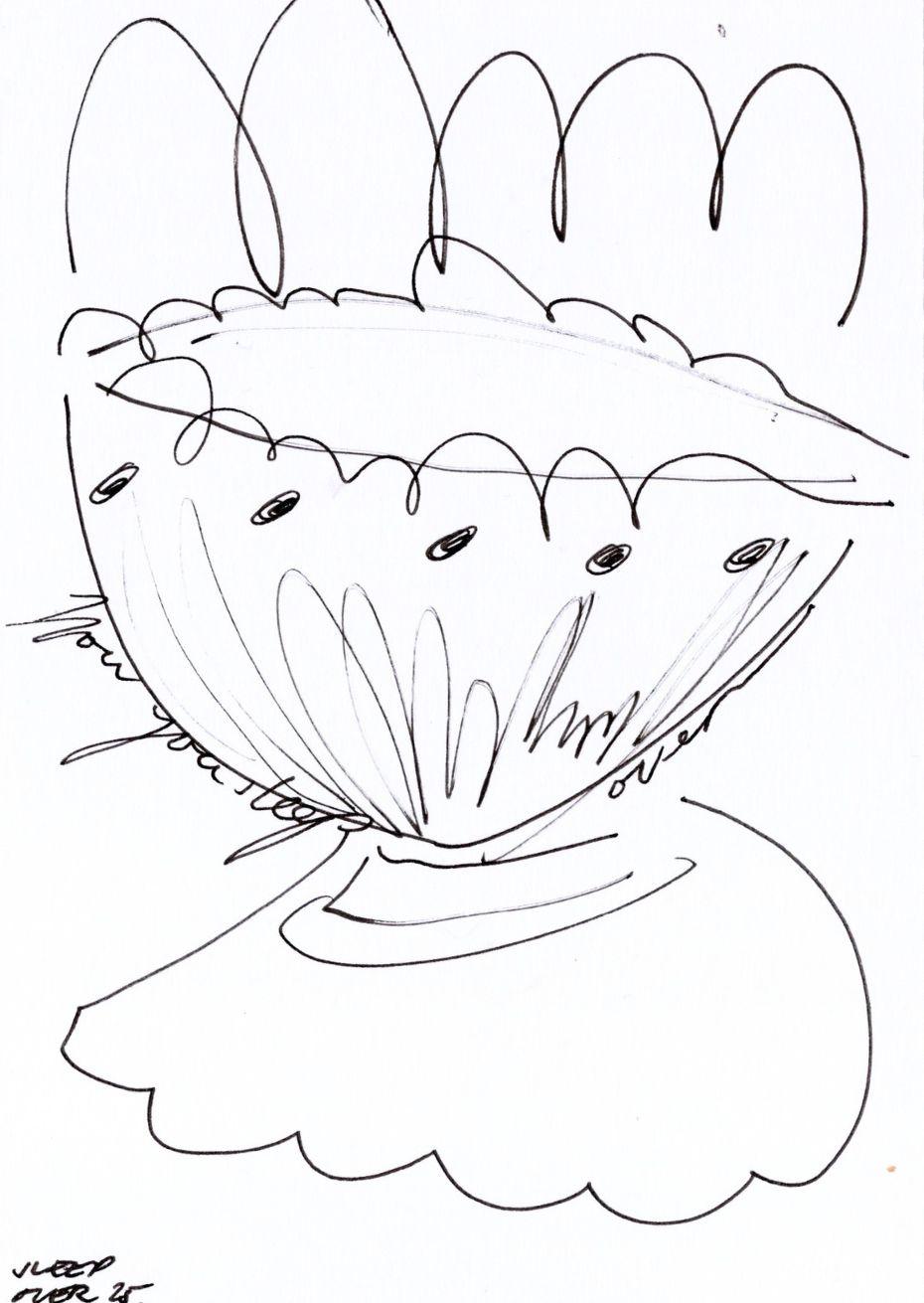
Treat Bowl I — Frances Caro 2025
Ink on paper
14.8 x 10.5 cm
$50
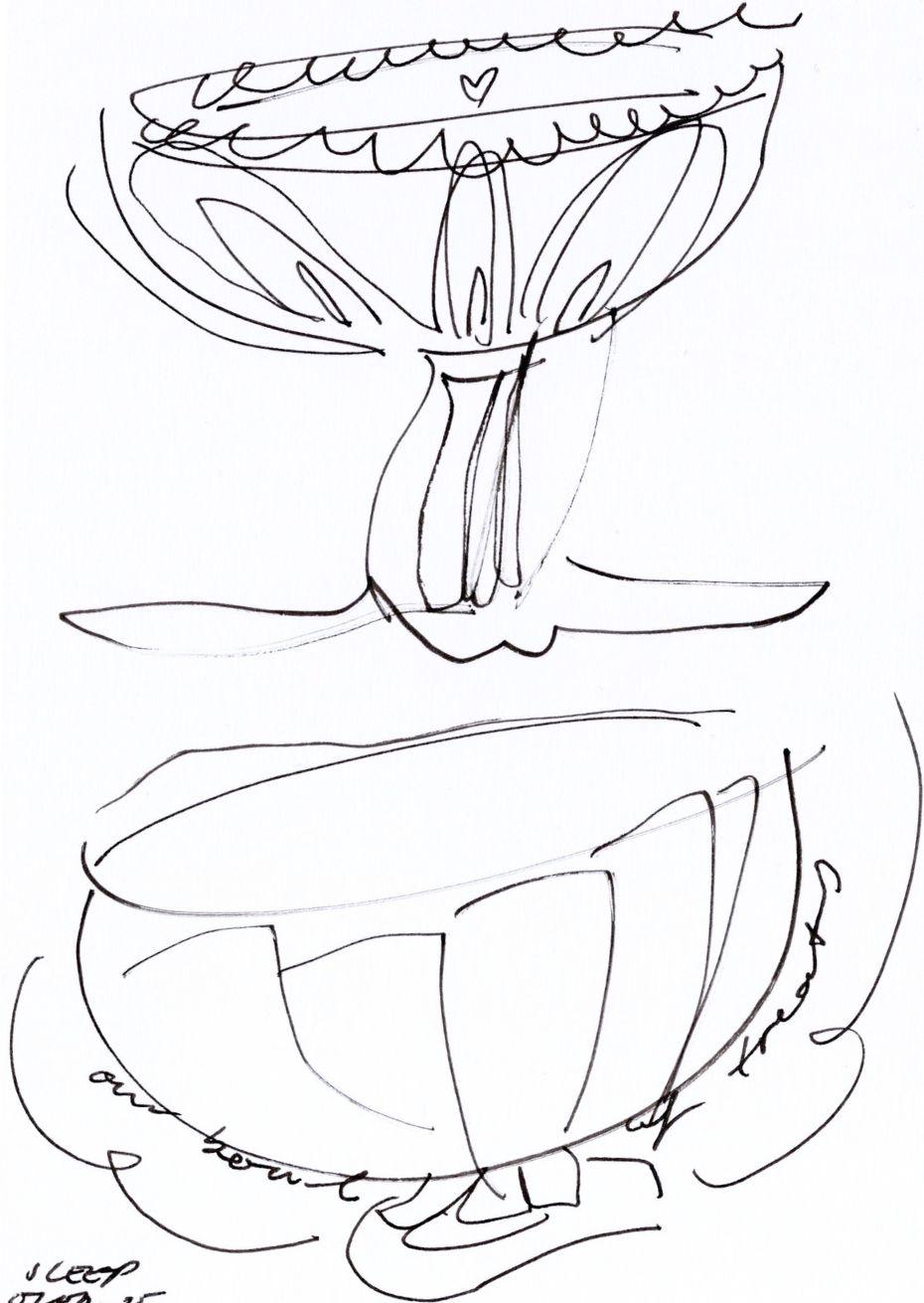
Treat Bowl Ii — Frances Caro 2025
Ink on paper
14.8 x 10.5 cm
$50

